April 21, 2019
Martha O'Kennon
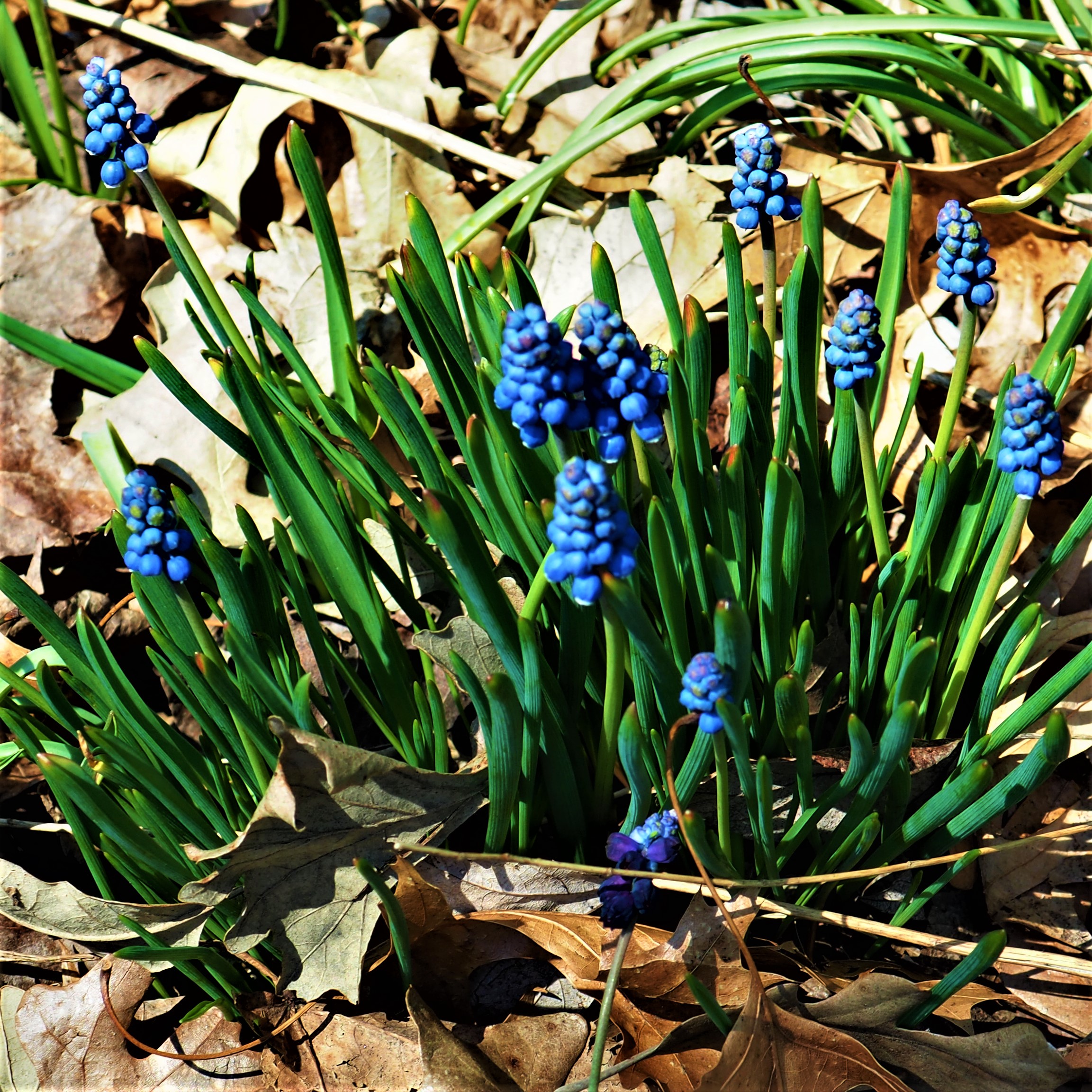
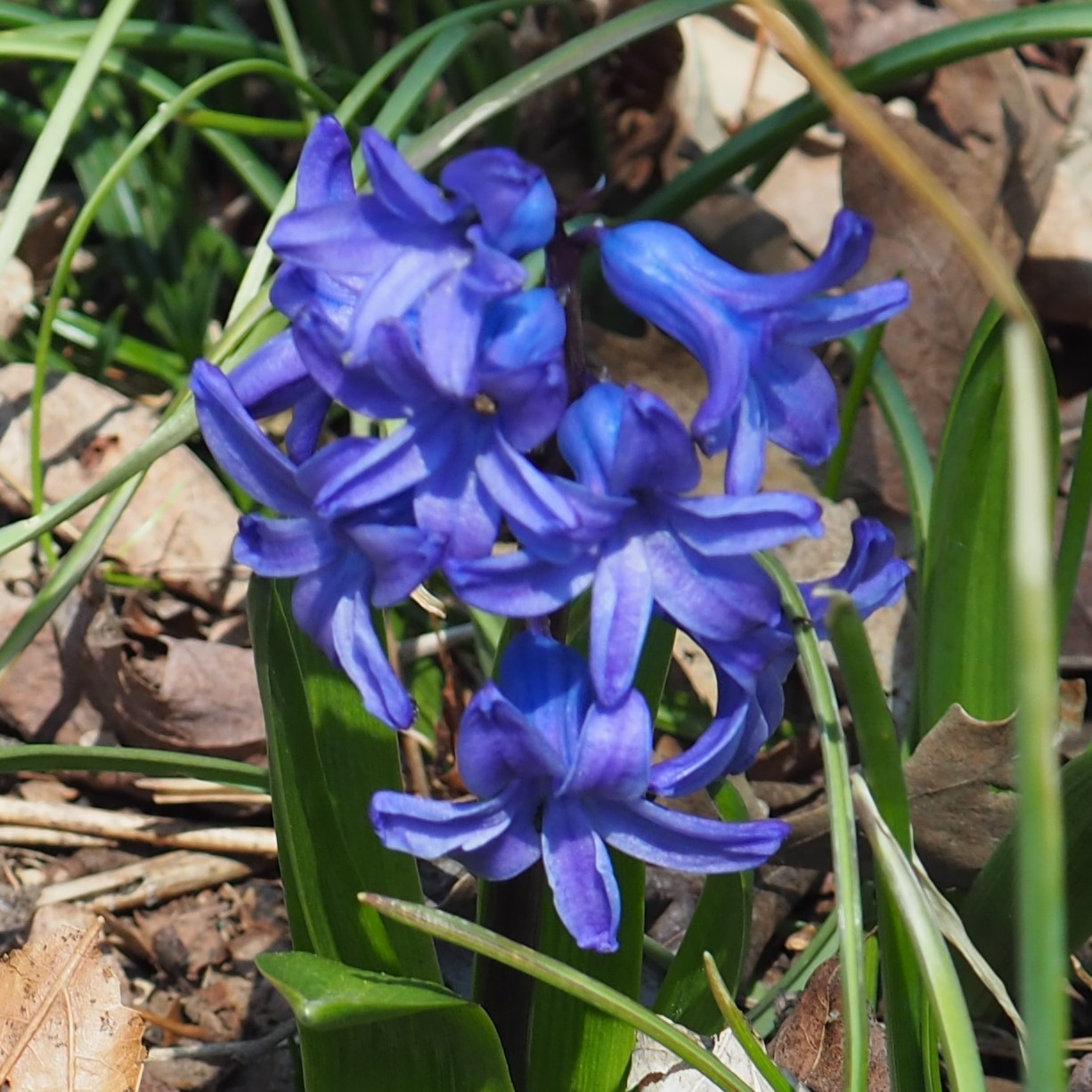
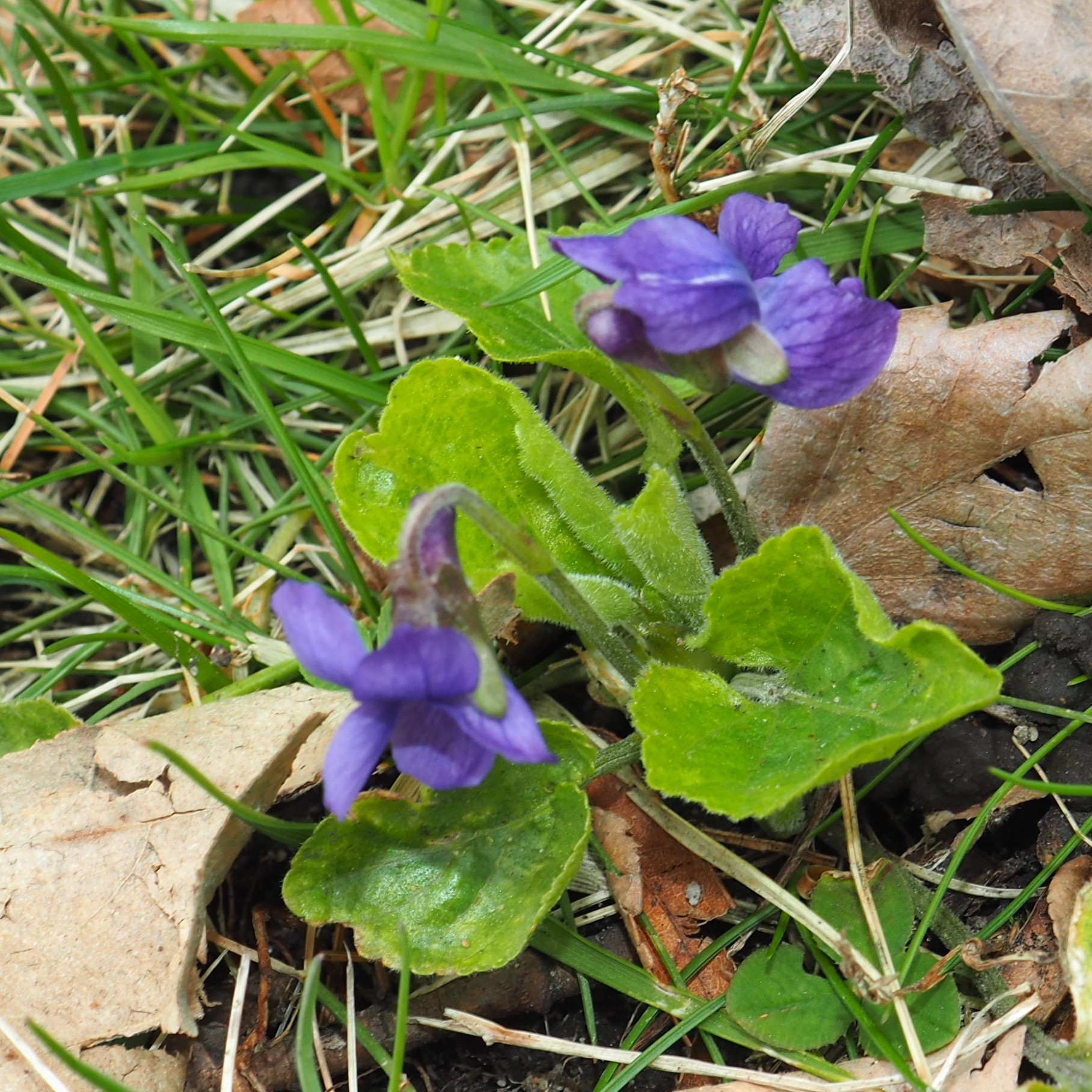
Are you feeling blue? Here are some blue flowers to keep you in the mood. The grape hyacinths are coming into their own. This is one of two varieties, the ones that have to come up from the ground with fresh new leaves each spring. The later ones have had their leaves out all winter, but they are budding up down there and will be ready after these first ones have finished. The one blue hyacinth is here, and if you count violet as a kind of blue, the purple violets are just starting. I don't get a lot of violets but here are enough for one shot.
Remember that there is information in the name of the file for each image. You can see it by mousing over the image - look at the lower left of the screen. Or you can click on the image to get to the (usually) larger image. Then the info is displayed in the address line above. Sometimes the second click will actually display a different view of the original image.
The ants on the shop most days were mostly the Smaller Carpenter Ants. The shiny ones with the reddish thorax and pink feet.
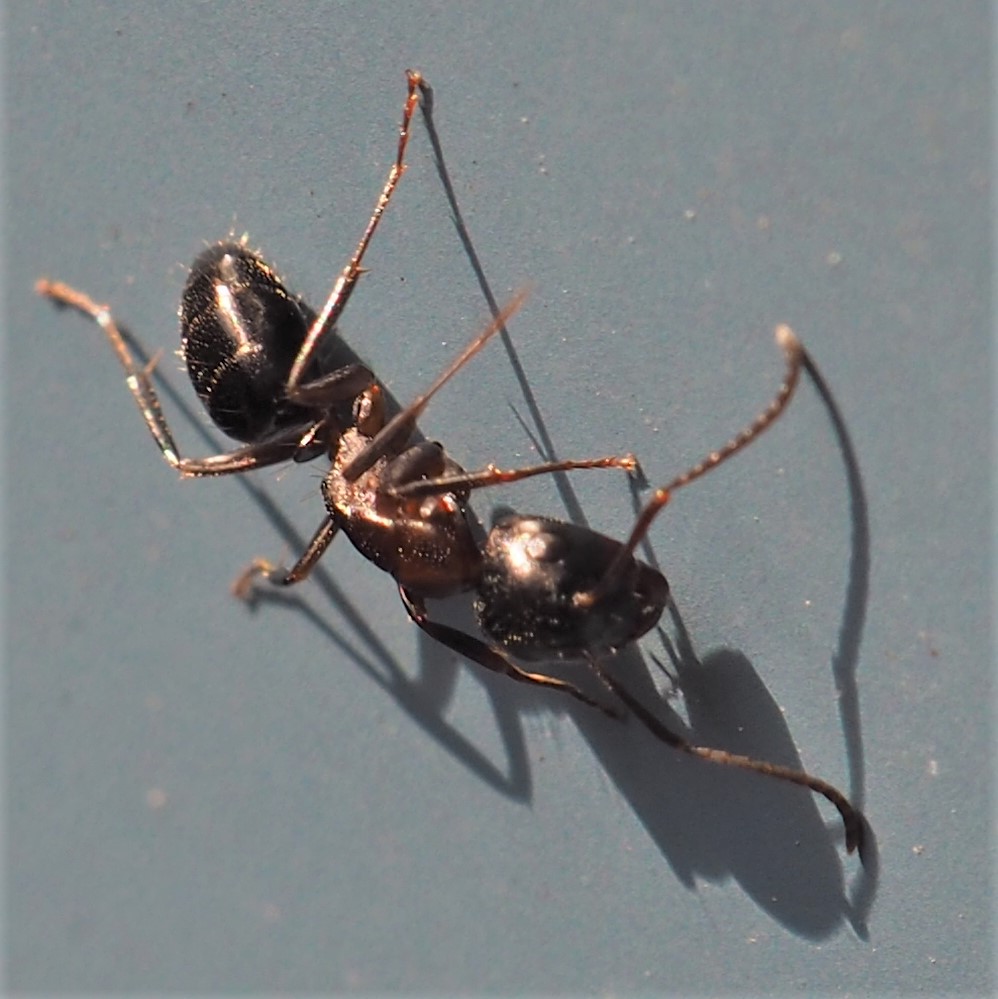
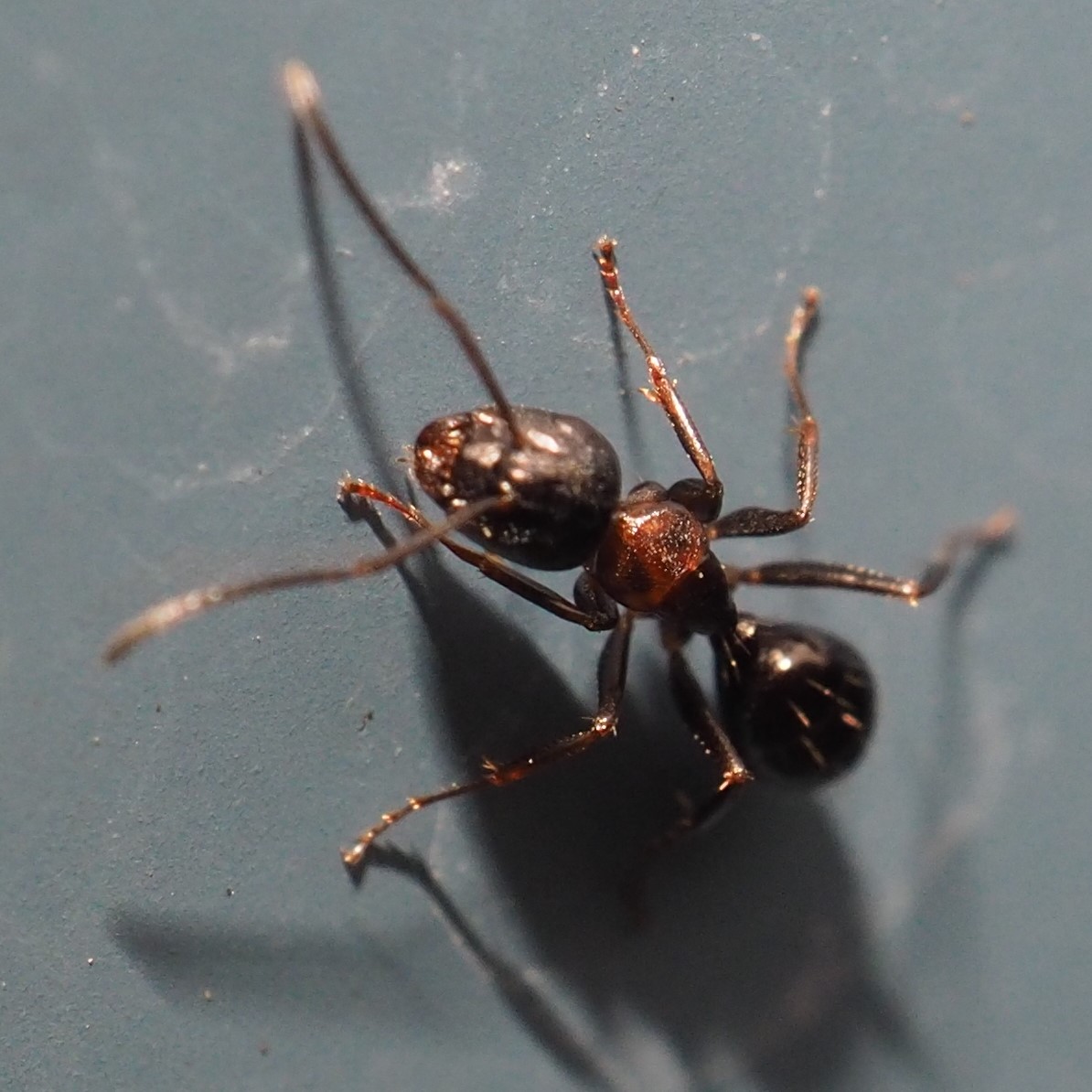
Today, April 20th, it was raining lightly and so the color of these wet ants must have been altered so that their heads looked bright red. Are they Small Honey Ants? Or something else that I don't recognize? Suddenly there were two different individuals and I wasn't very good at keeping their portraits separate. But the third picture here certainly looks like a Small Honey Ant. I think Pictures 1 and 2 are showing us the undersides of a Small Honey Ant.
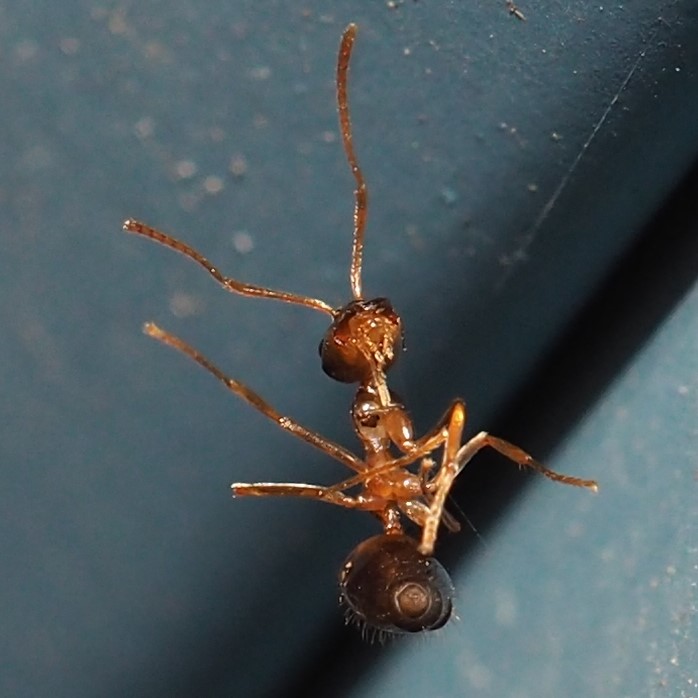
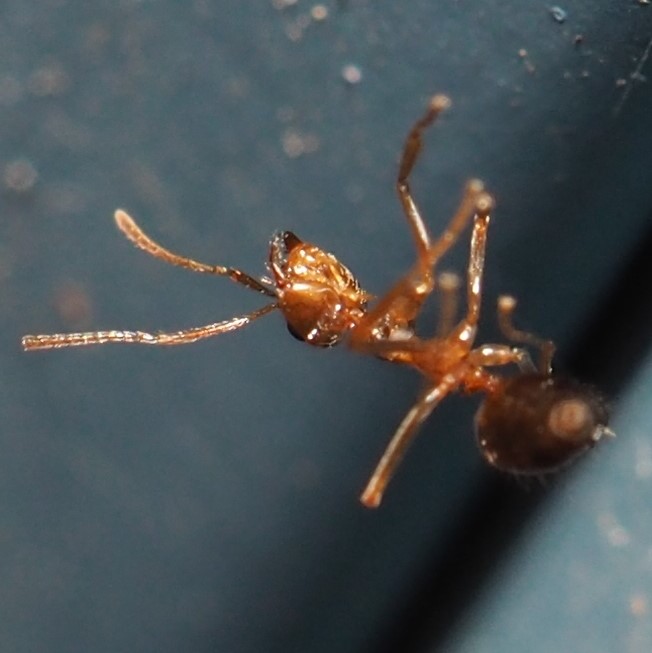
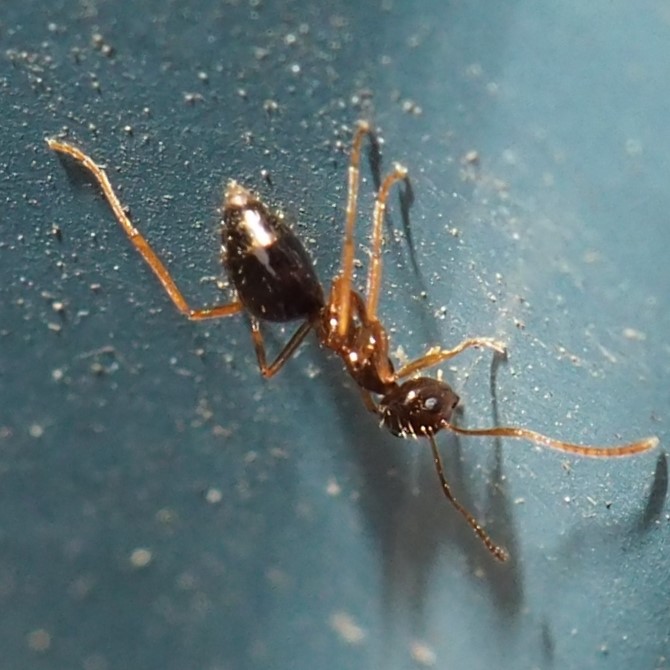
But the little nest out front still has the little Small Honey Ants coming and going. This first little worker seems to be carrying a grain of sand out of the nest. On Wednesday, there were a few winged males outside the nest.
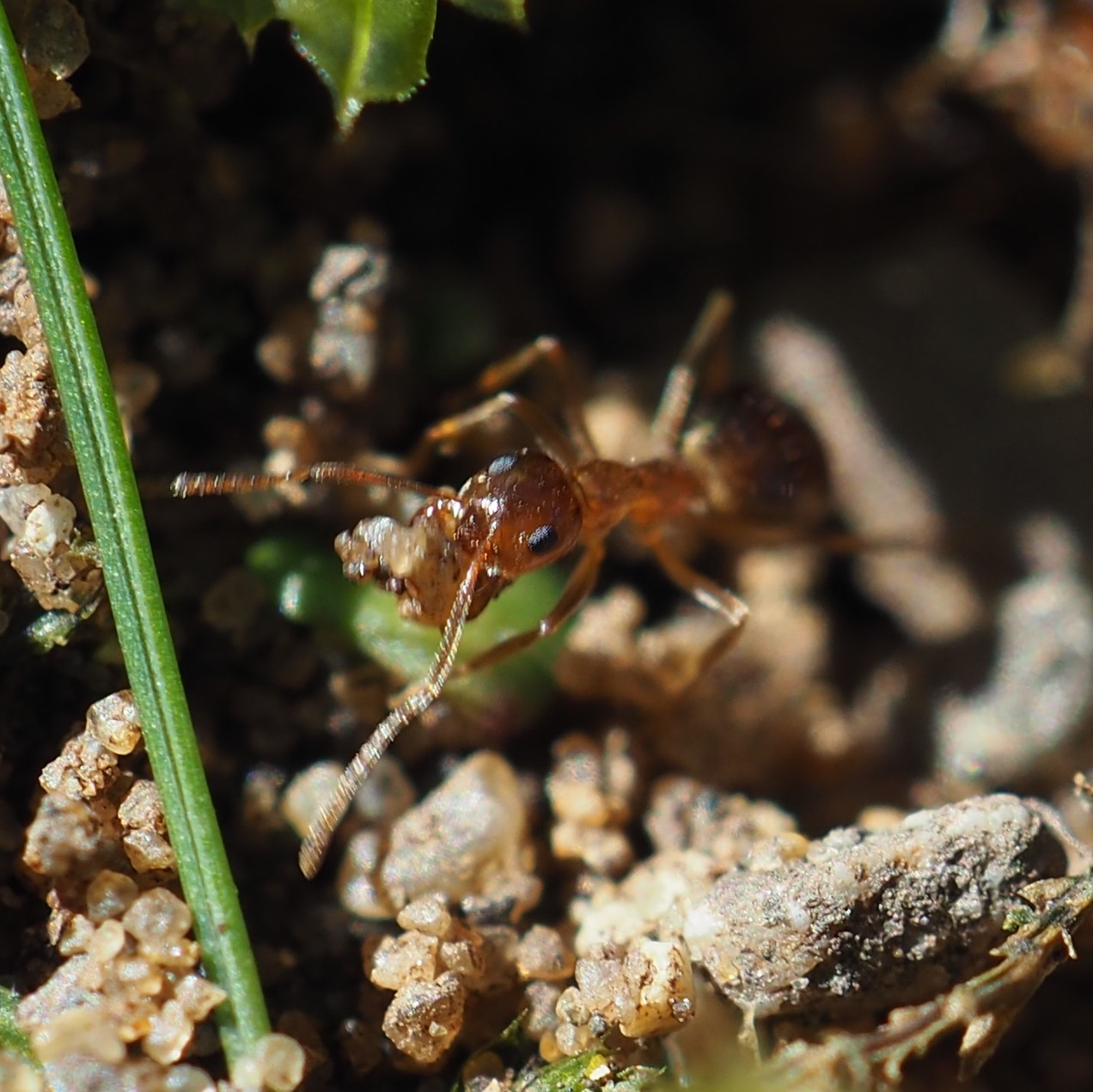
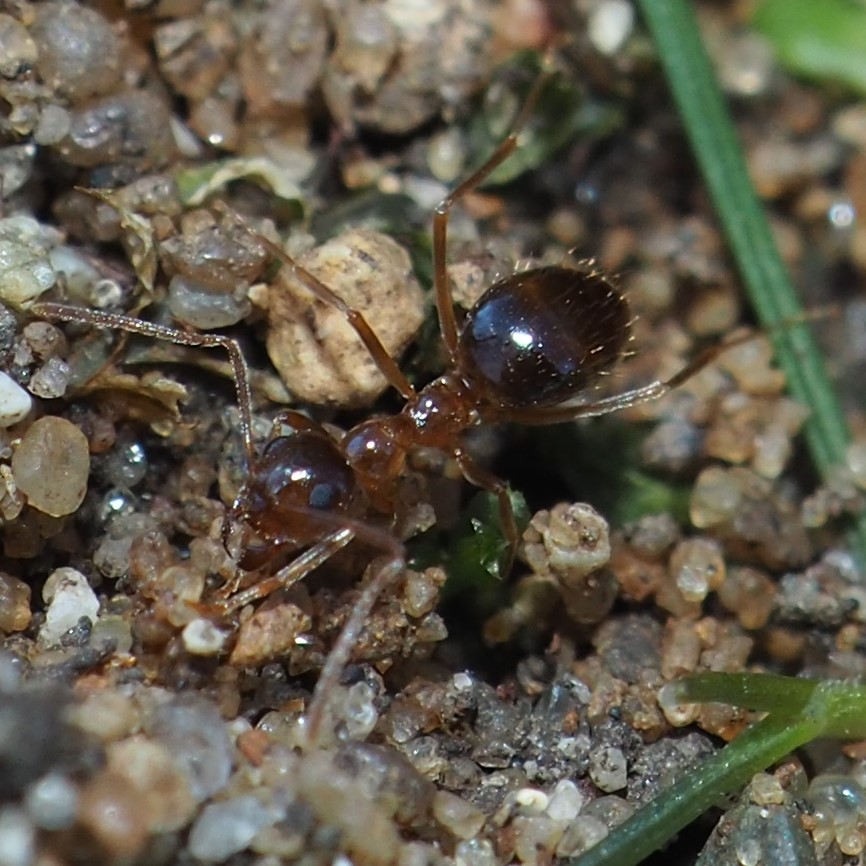
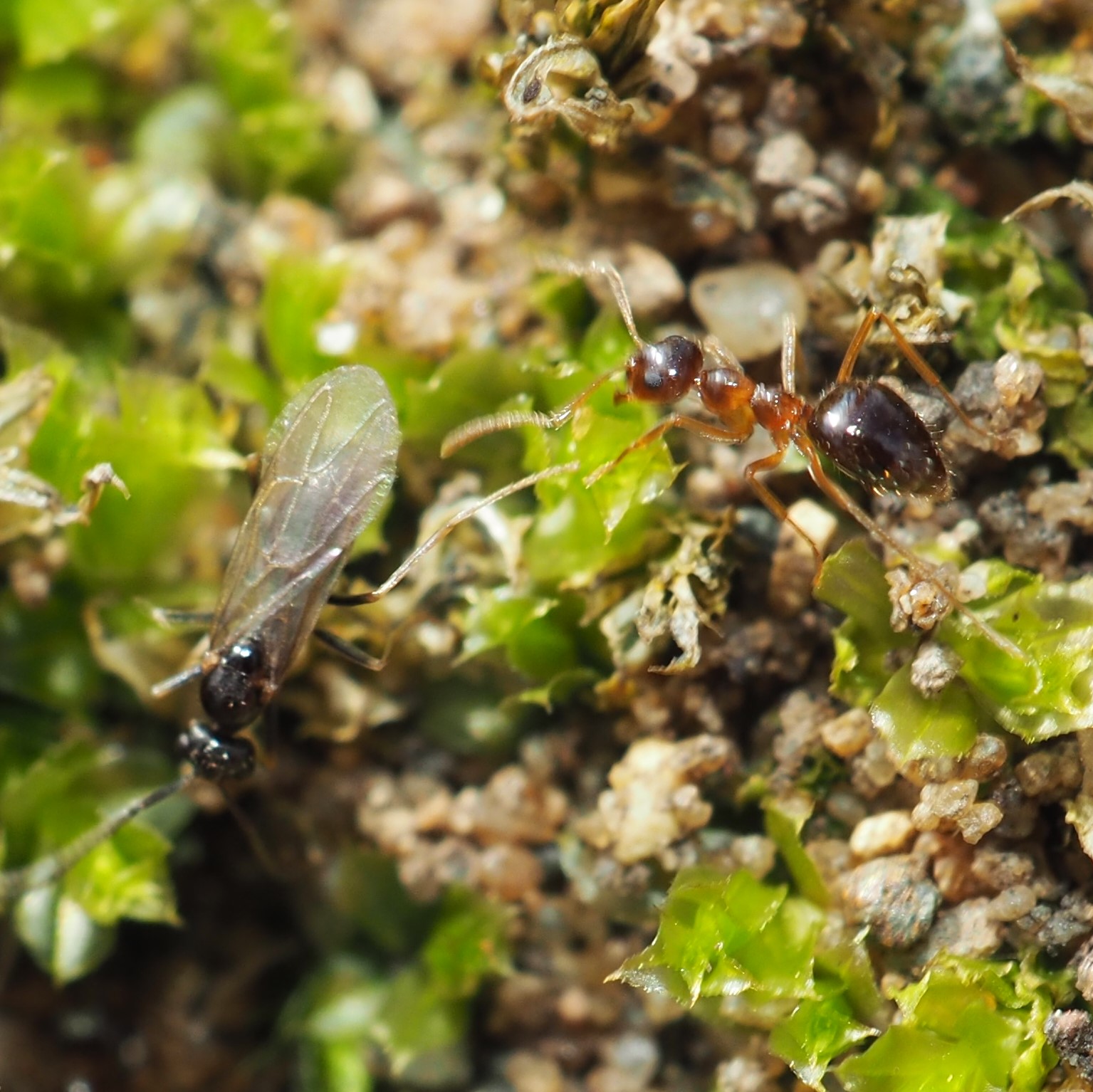
Here is one little male running around and then heading down the hole.
.gif)
We had a few beetles. This first one is from the genus Litargus, a group of Hairy
Fungus Beetles. The ID was confirmed by @borisb (Boris Büche) of iNat as Litargus tetraspilotus. The next one, Notoxus desertus, is a member of the Ant-like Flower Beetles. (I don't think it's very ant-like either, but there we are.) It last appeared here in October. This shiny little red beetle is a new one for me, but @borisb says it is a Flea Beetle. In fact, it is smaller than most fleas, only about .5 mm.
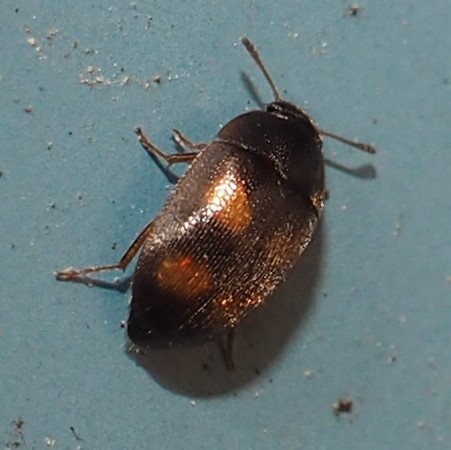
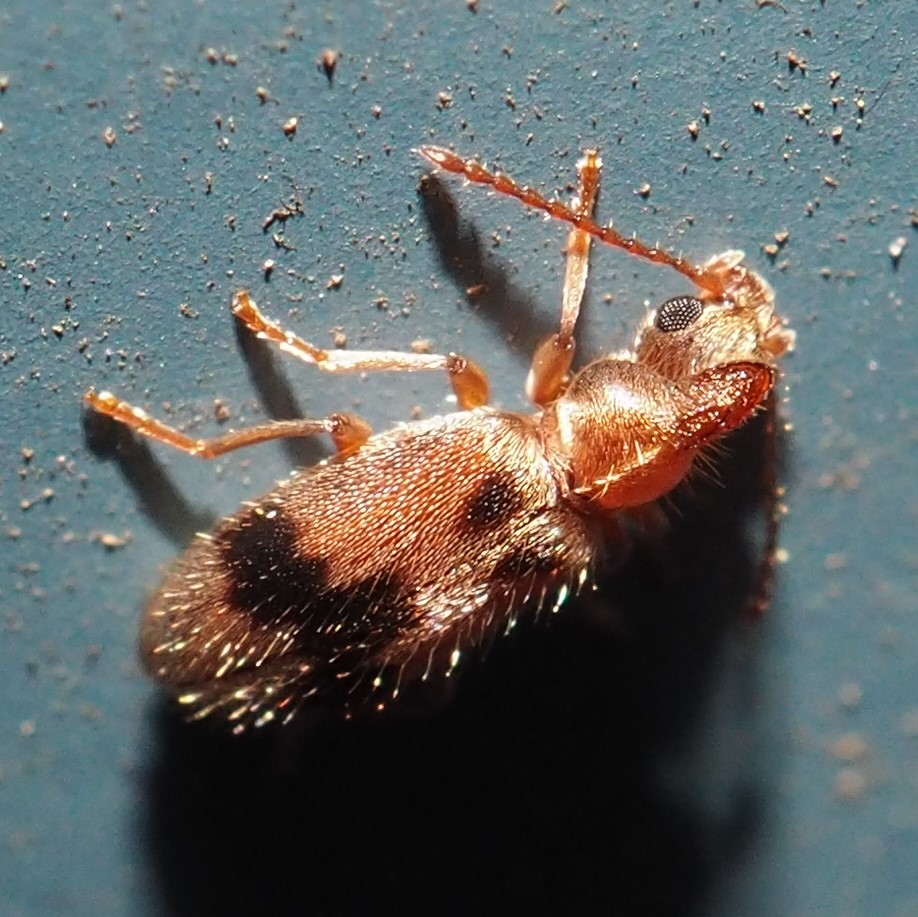
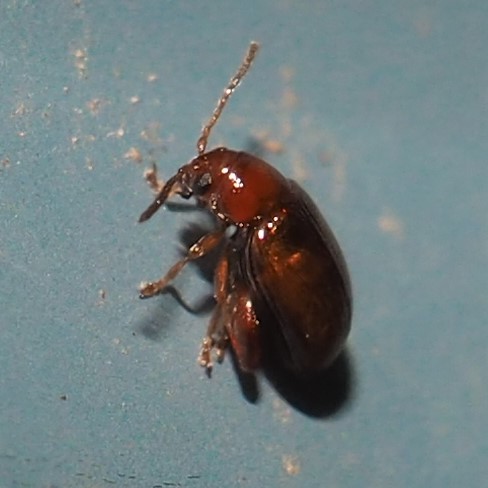
This beetle is many times larger than this Common House Spider, but spiders are fast and hungry. The second may be a weevil but I haven't posted it recently. All these little beetles look weevily to me. Number 3 IS a weevil, the Redbud Bruchid. I don't know what the fourth little guy is - I took this picture in the rain!
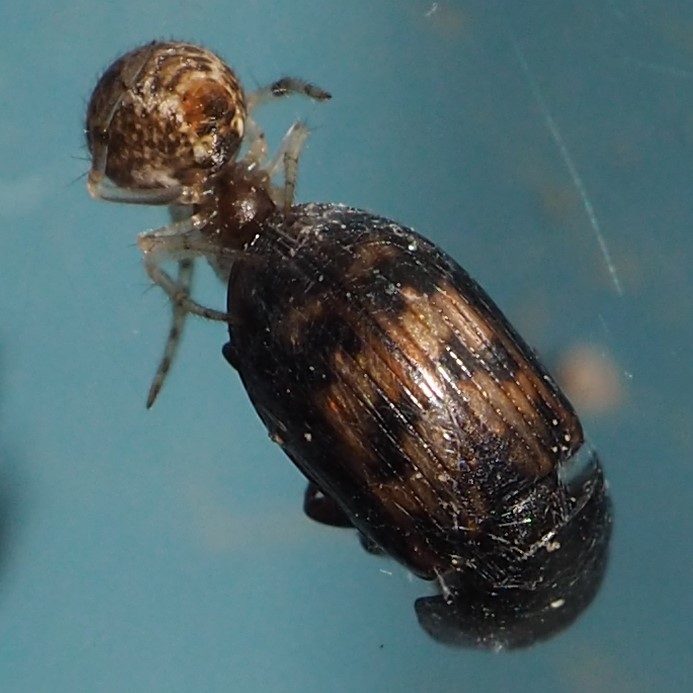
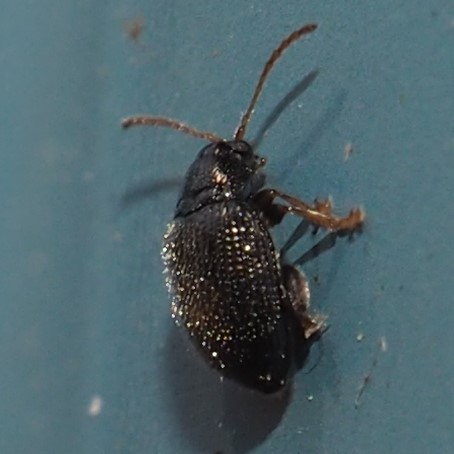
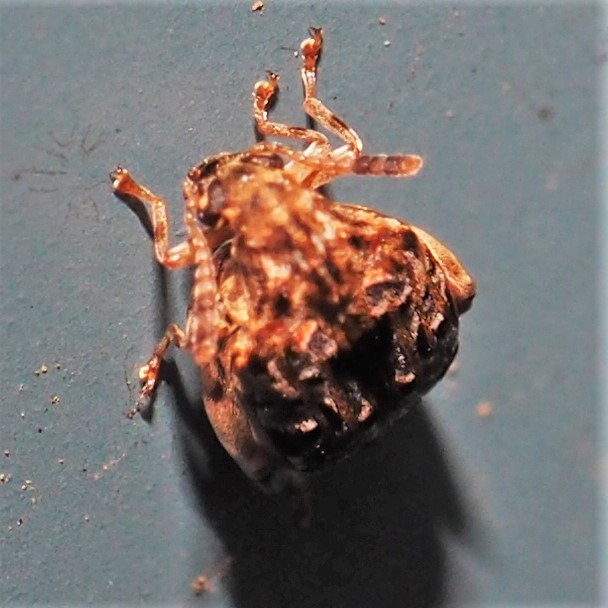
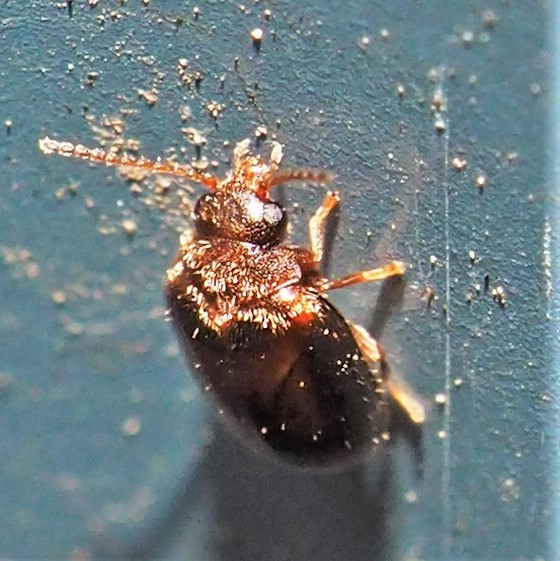
One of our favorite leafhoppers is here again. I believe that a couple of years ago, the generic name for this leafhopper was Arboridia, but now it seems to be Erythridula. See, the process of sorting out the family trees of the insects is far from over. This is just one example. The second one is probably in the genus Eratoneura. Both of these leafhoppers have been frequent flyers around here.
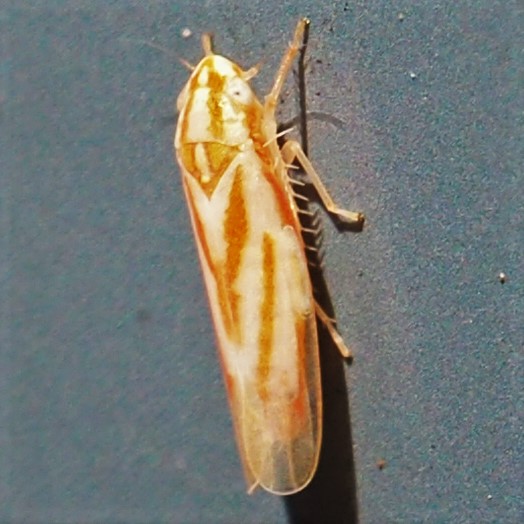
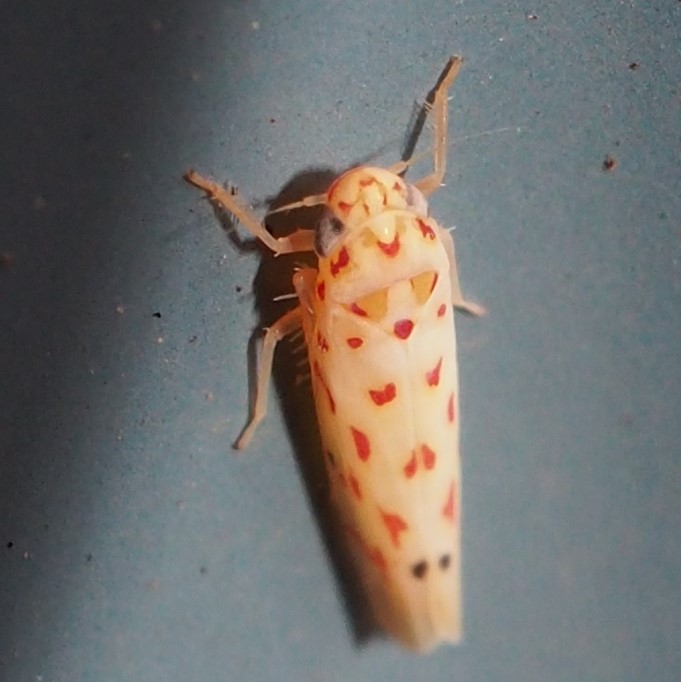
I was lucky this winter not to see many Brown Marmorated Stink Bugs in the house, but a few days ago, this lovely one fell onto my shocking pink blanket, very close to my face. I got quite excited since, having just woken up, the bug looked green next to the pink. I sprang from my bed like the guy in the Night before Christmas, grabbed my camera and after the pictures were taken, I saw that it was just a case of seeing the complementary color to the pink. Picture 3 is the real deal. Yes, a BMSB. Last is a Stilt Bug clasping itself to the siding so that it looks upside-down!
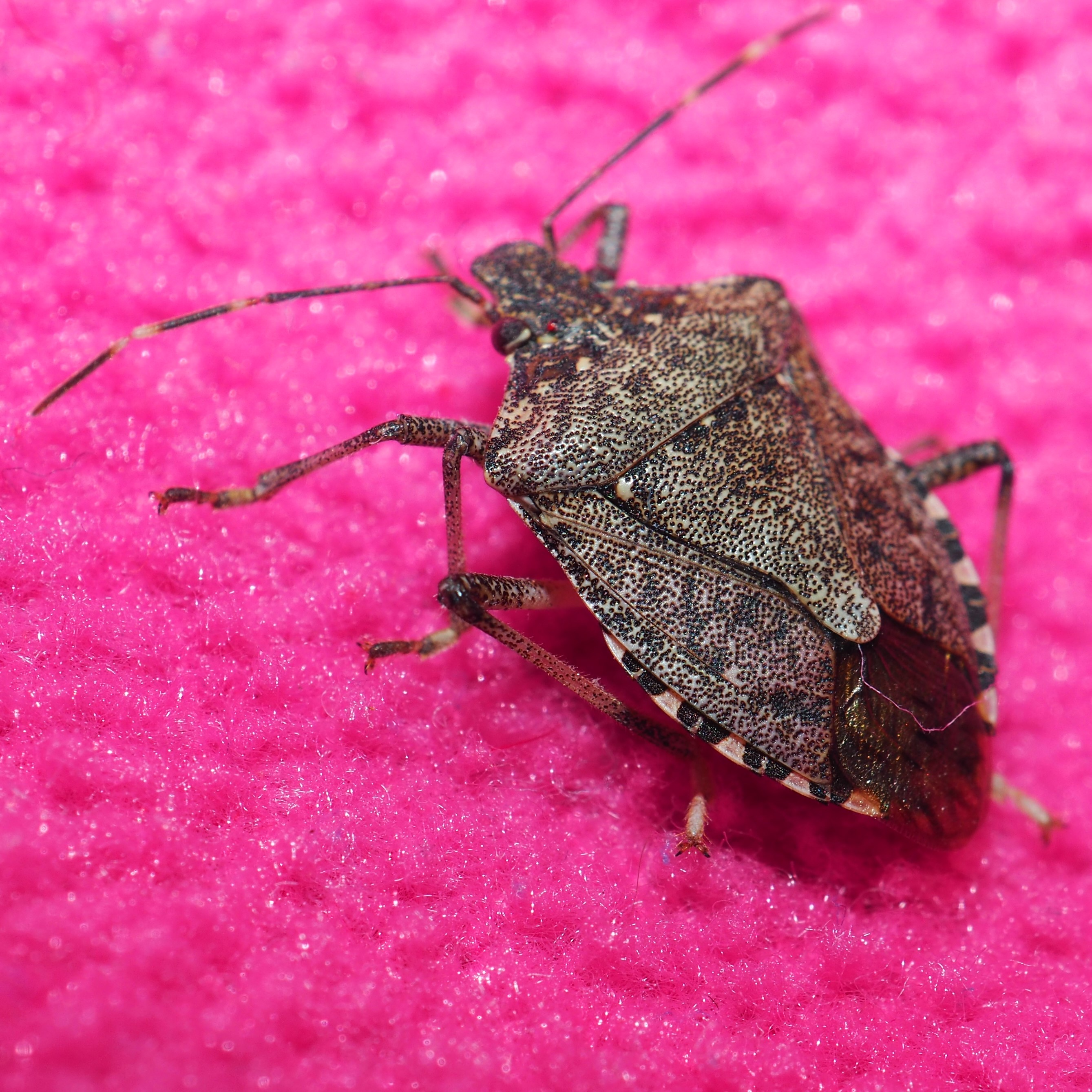
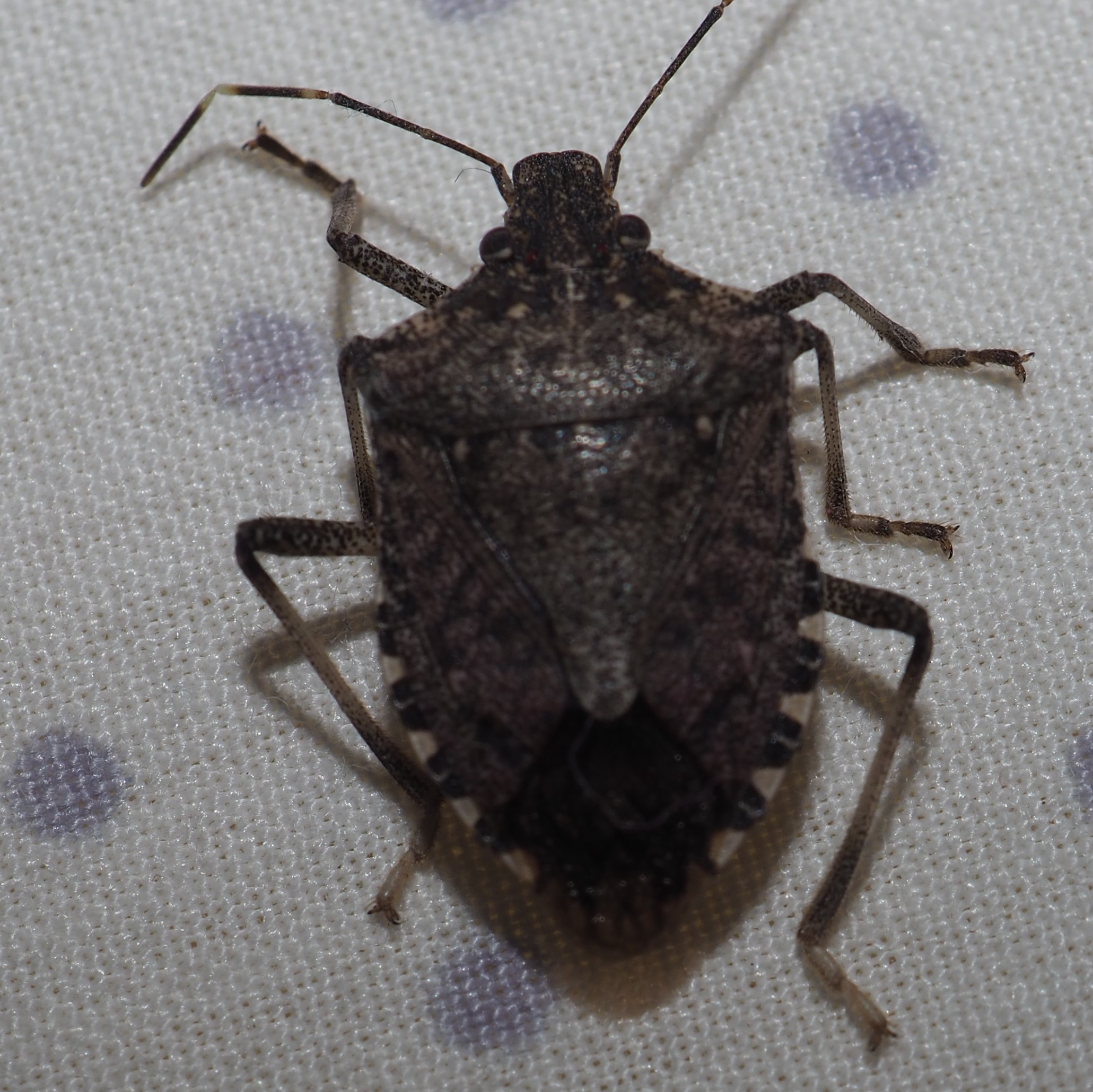
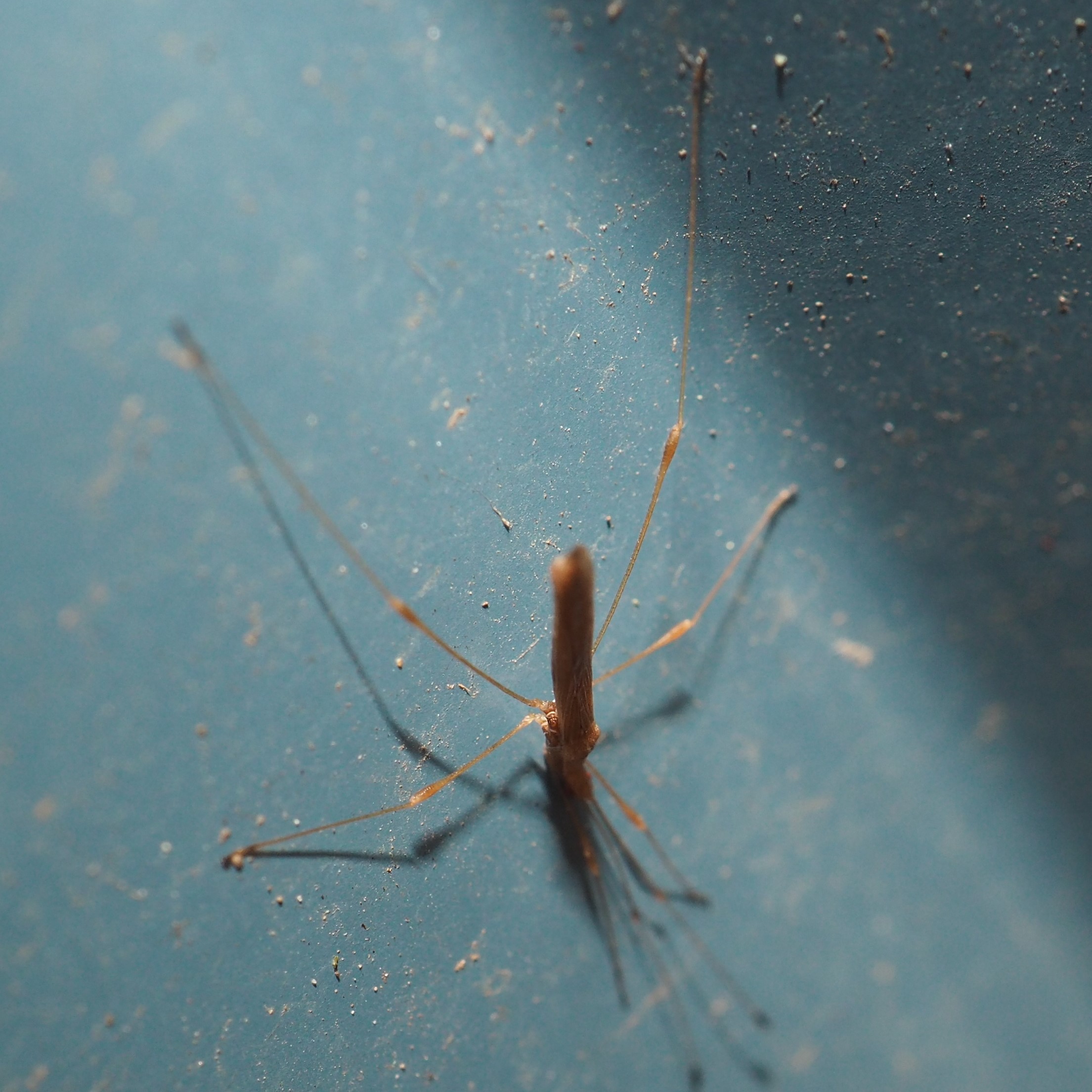
Flies, Flies, they all look the same to me. Fortunately the camera is able to expand their little pictures, but even so, they seem to be Midge, Non-biting Midge, Gall Midge, Fungus Gnat, Wood Gnat. There are, however, some differences that even I can see. There's a greenish one, and a few other things. Maybe by this time, you know how to narrow these pesky creatures down a bit. Fungus Gnats and Gall Midges have fuller rounder wings than the Midges, whose wings are mostly straight-edged. The Fungus Gnats that I've seen seem to have big spikes on their joints. Here's one. Image 2 is of a Gall Midge, if I obey my own rules of identification. If you get a good close picture, sometimes it seems that the Gall Midges have antennae that resemble strings of pearls. Image 3 is a Gall Midge from March 26. Why are they called Gall Midges? Because the larvae of these species make swellings (Galls) on the leaves of certain plants. Here
is a google search for "gall midge gall". (There are many kinds of galls and they can be caused by many kinds of insect larvae, such as wasps.)
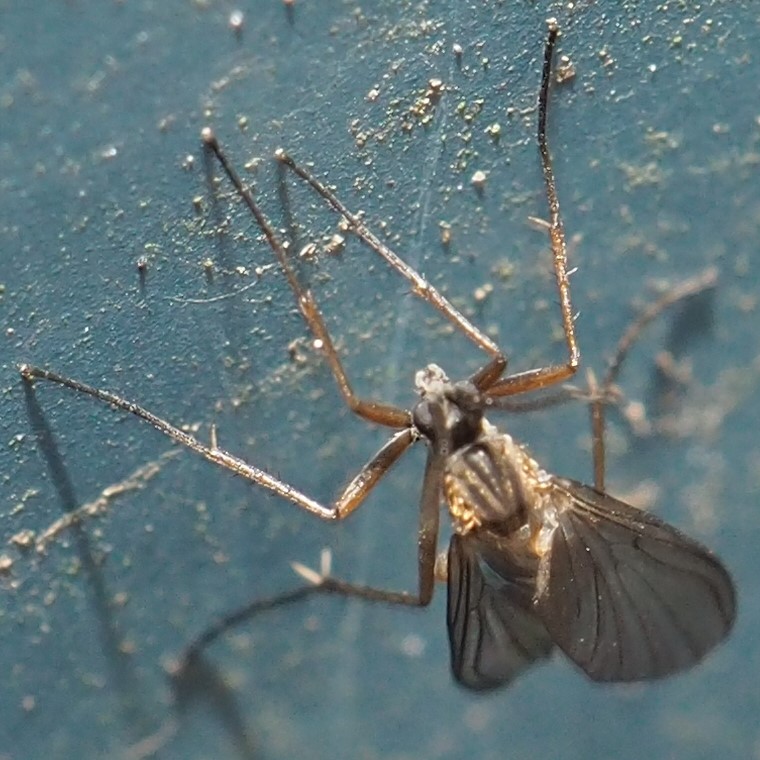
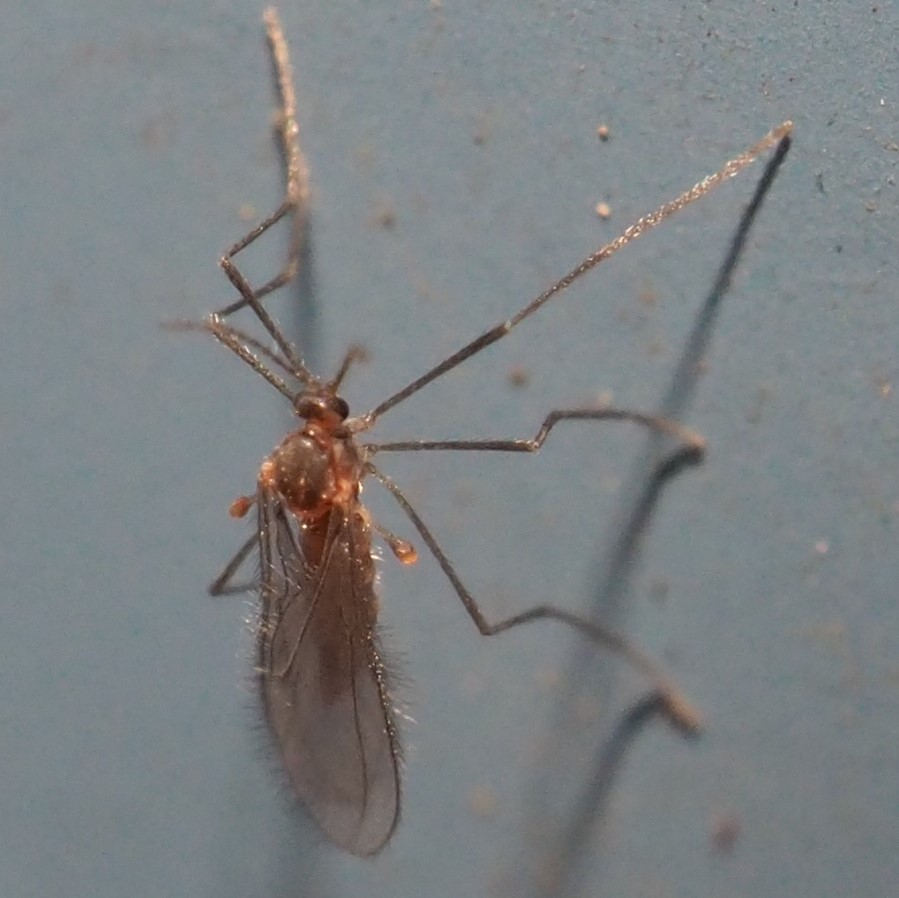
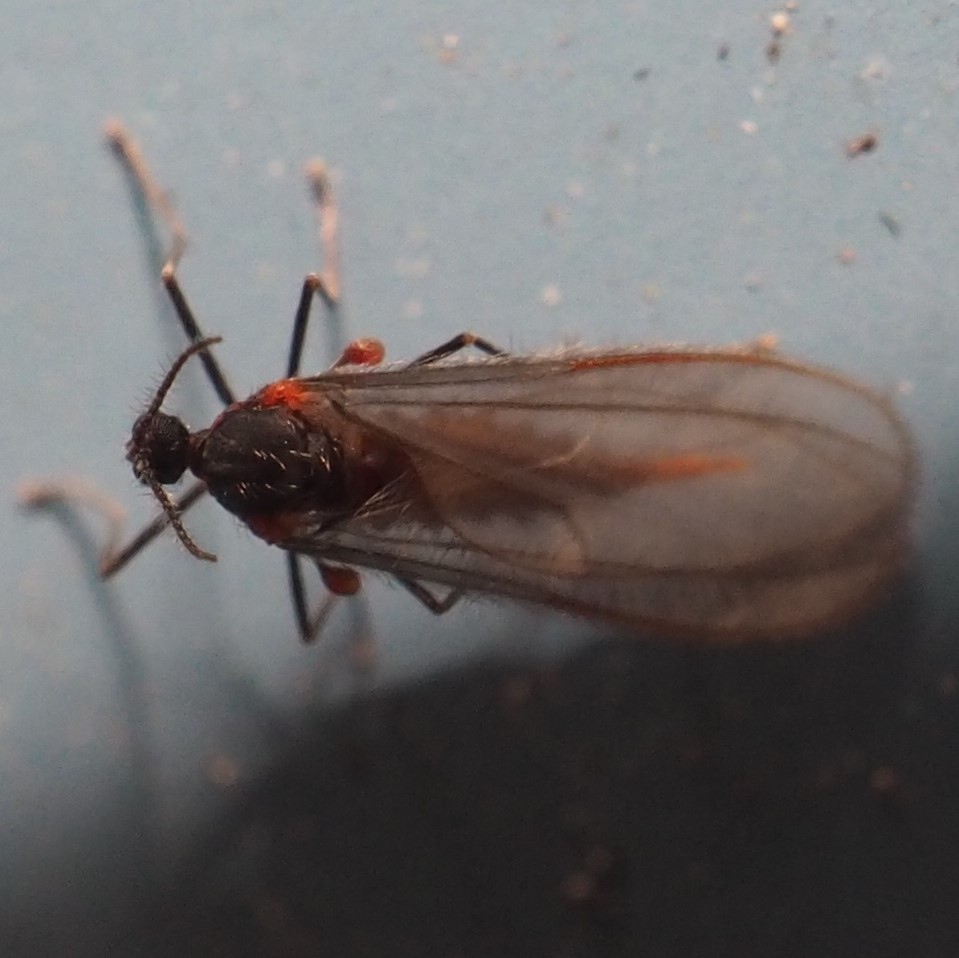
Here is a pair of midges mating way back in April 2016, and another clearer picture taken in March 2019. Can you guess which is the female and which the male? It's easy if you remember that in midges, the male is the one with the big fluffy antennae. It also has the long skinny abdomen that gives him away as a Non-biting Midge (Chironomid). The female has an abdomen that is much rounder. Last in this row is another of those greenish midges.
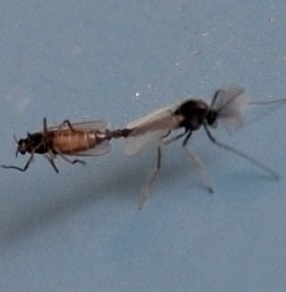
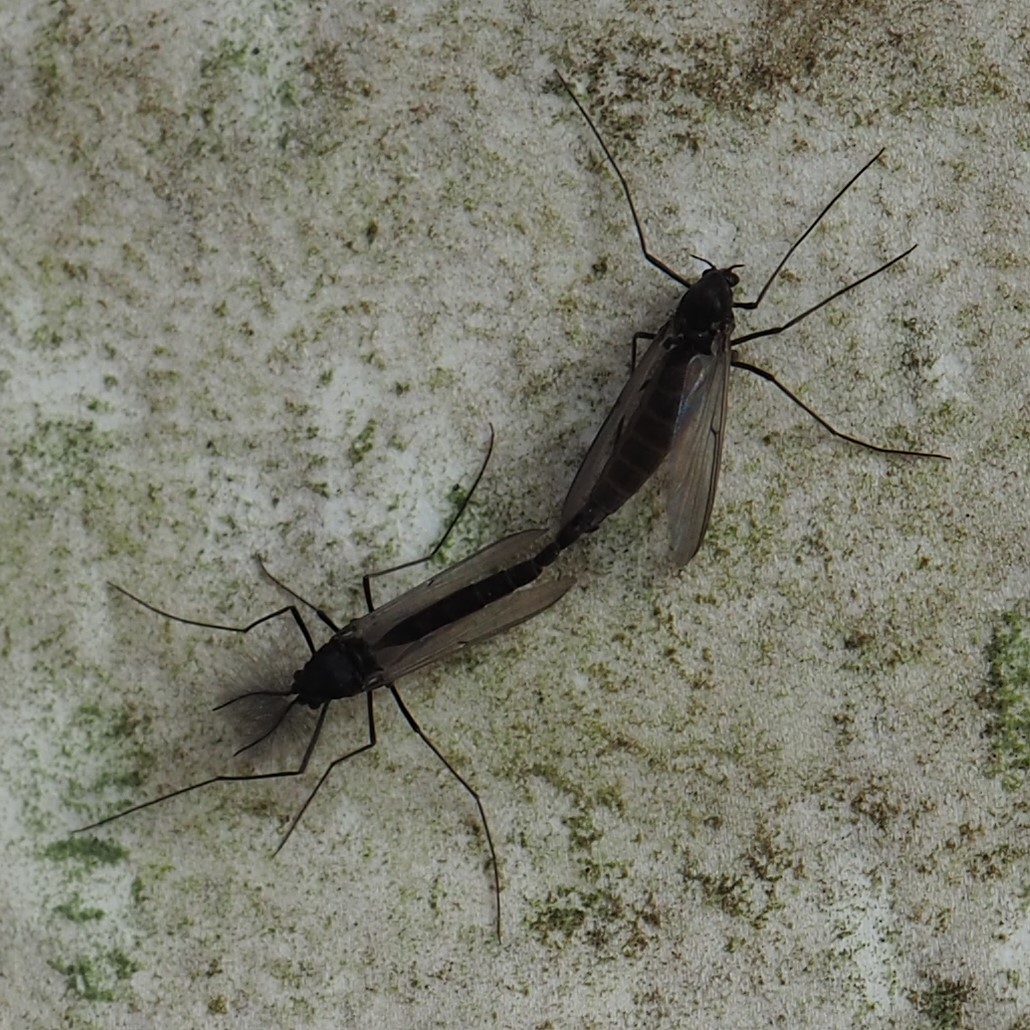
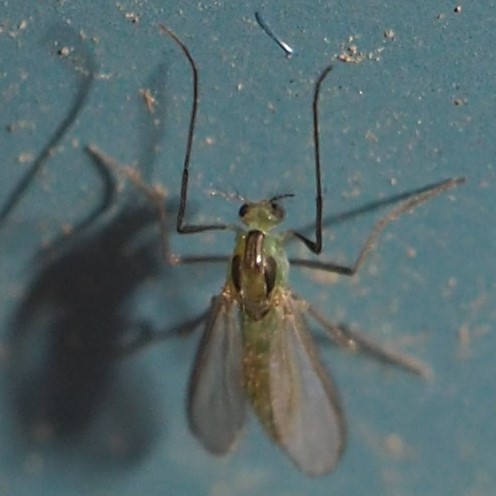
Color time! That pink hyacinth that we've been watching for a few weeks has hit its peak. The purple hellebore has suddenly (it seems) sprung up from the ground with its subtle purplish-pink flowers. The ancient Japanese quince (Japonica) has budded out and will be blooming very soon. It reminds me of one year when the bright orange flowers attracted some Baltimore Orioles for a morning.
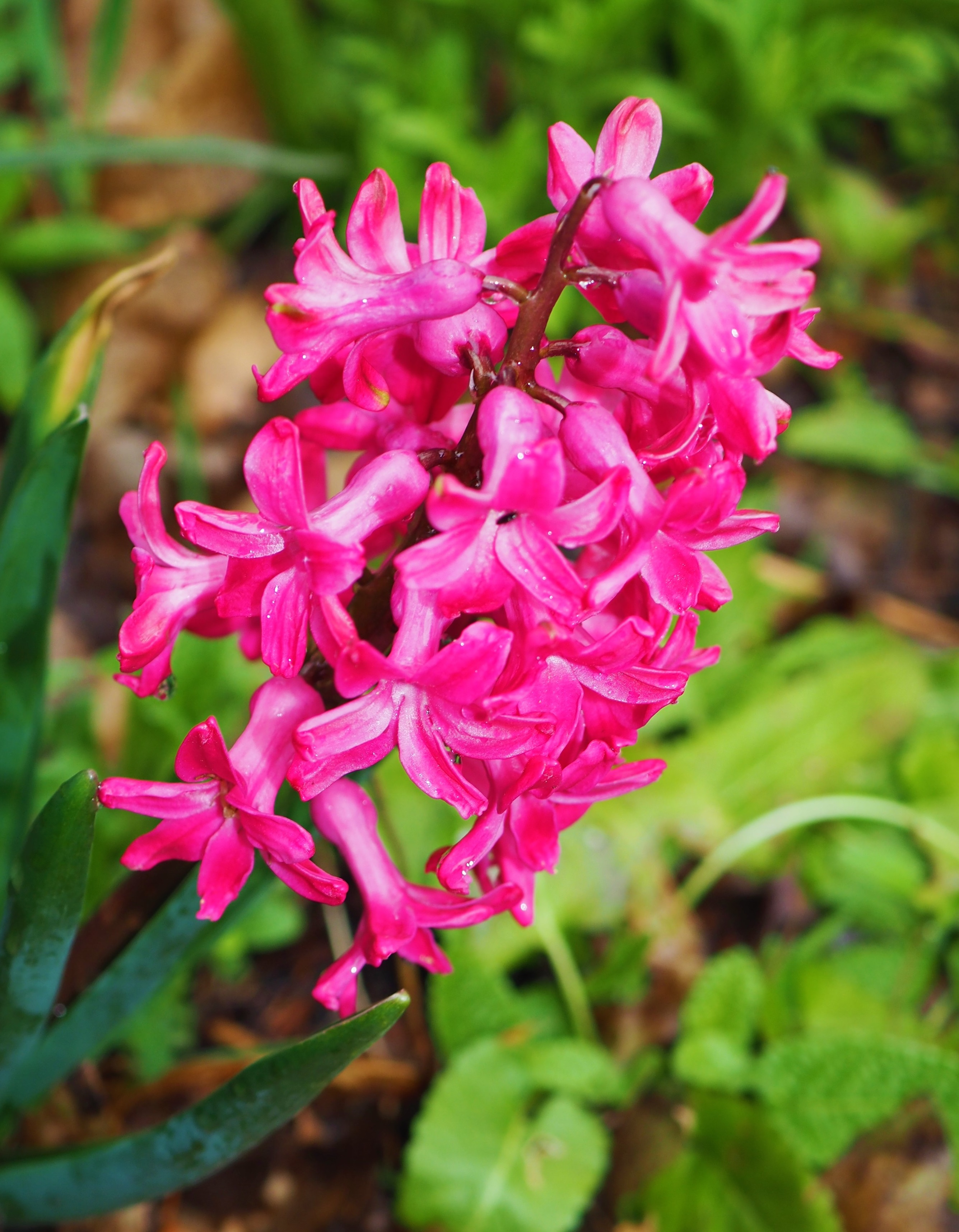
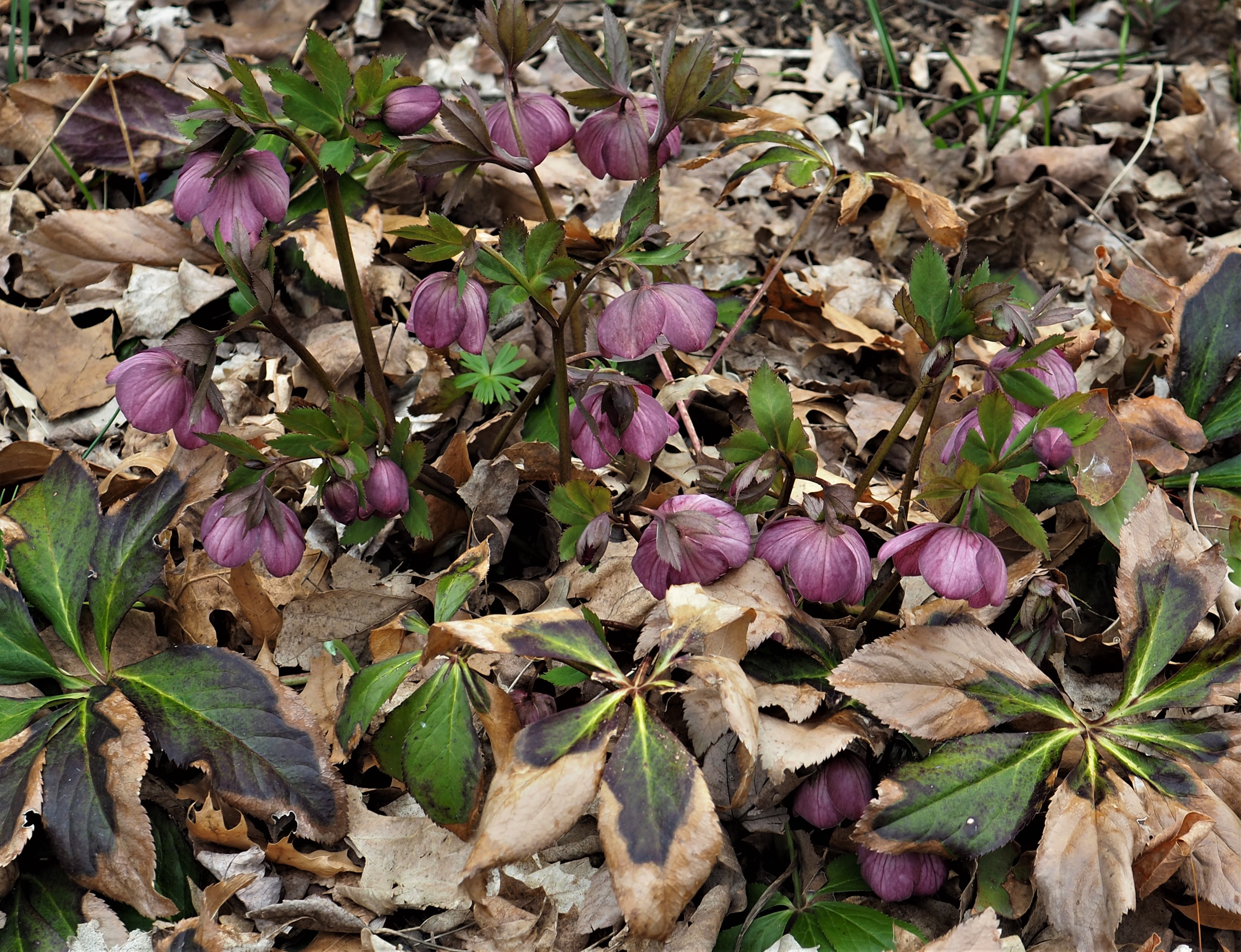
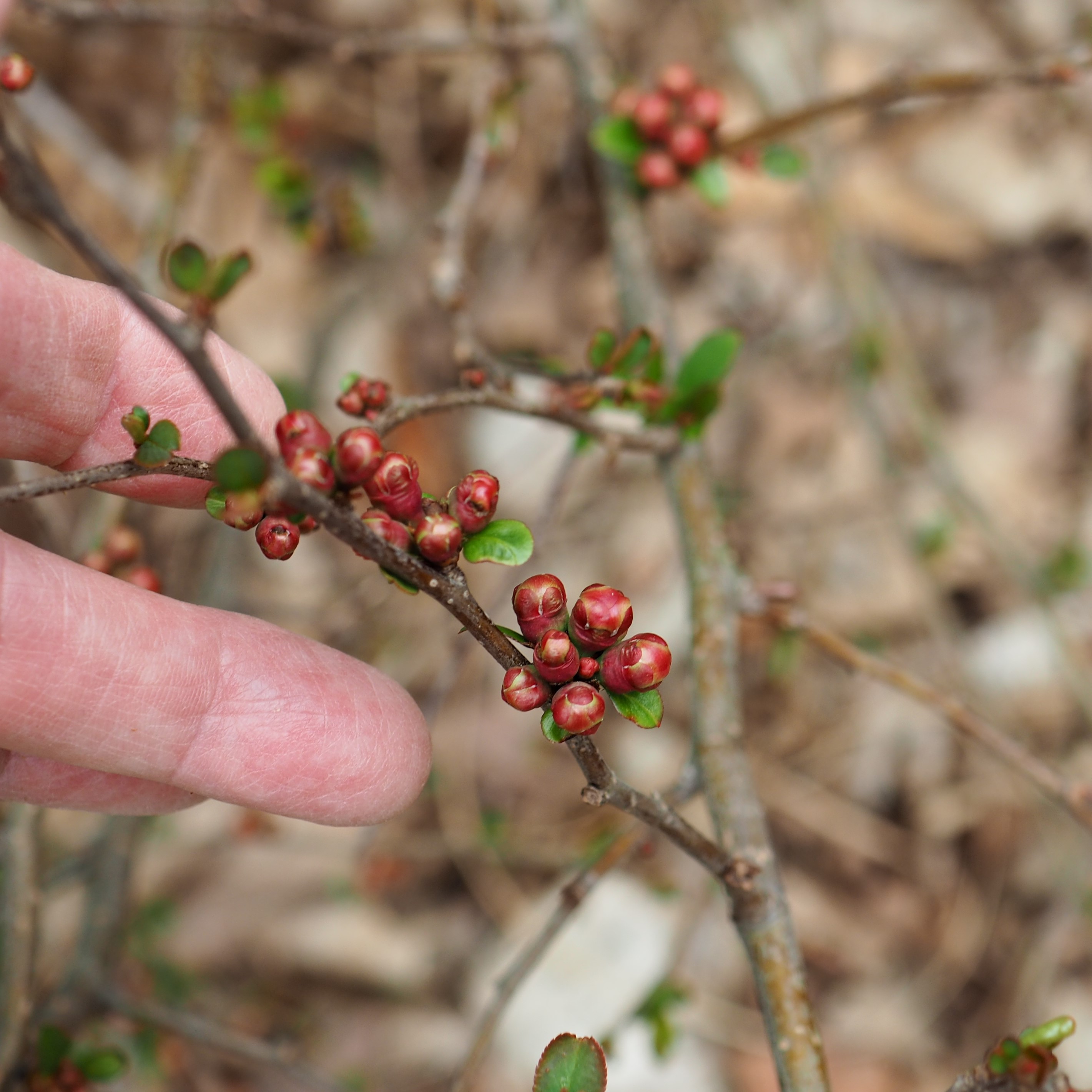
Here is the pulmonaria with some blossoms moving from pink to blue and some lovely furry leaves with dark green background and white spots, making this plant a pleasure all season!
The peony is up, with its young reddish-green leave and a few larger leaves. Last, this Thistle is a return from one in this same locus last year. This is the plant I always enjoy searching for the Treehopper Entylia carinata, which only settles into these Thistles. Actually I'm beginning to think that my yard is host to at least two species of Thistle. I've just submitted this one to iNat for ID.
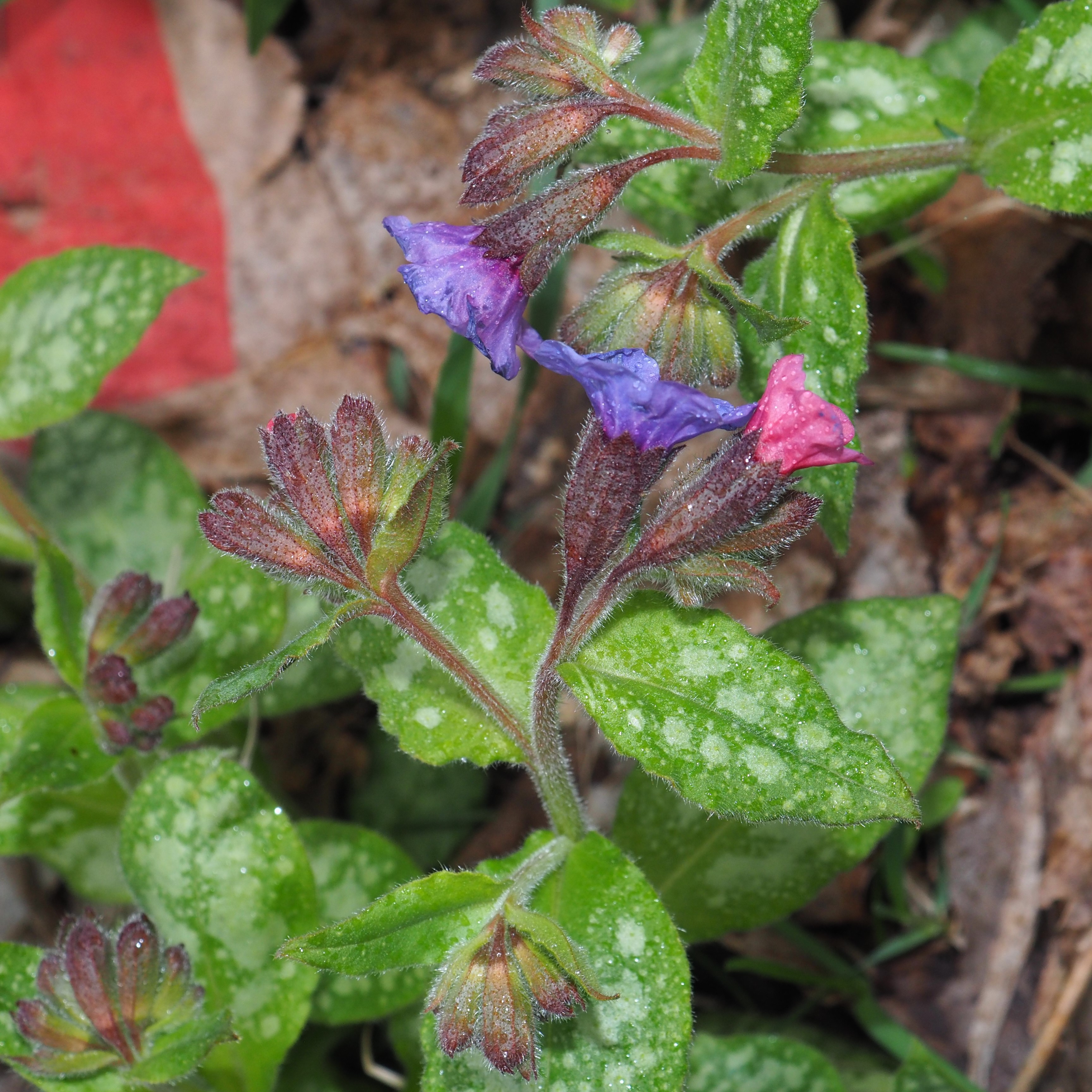
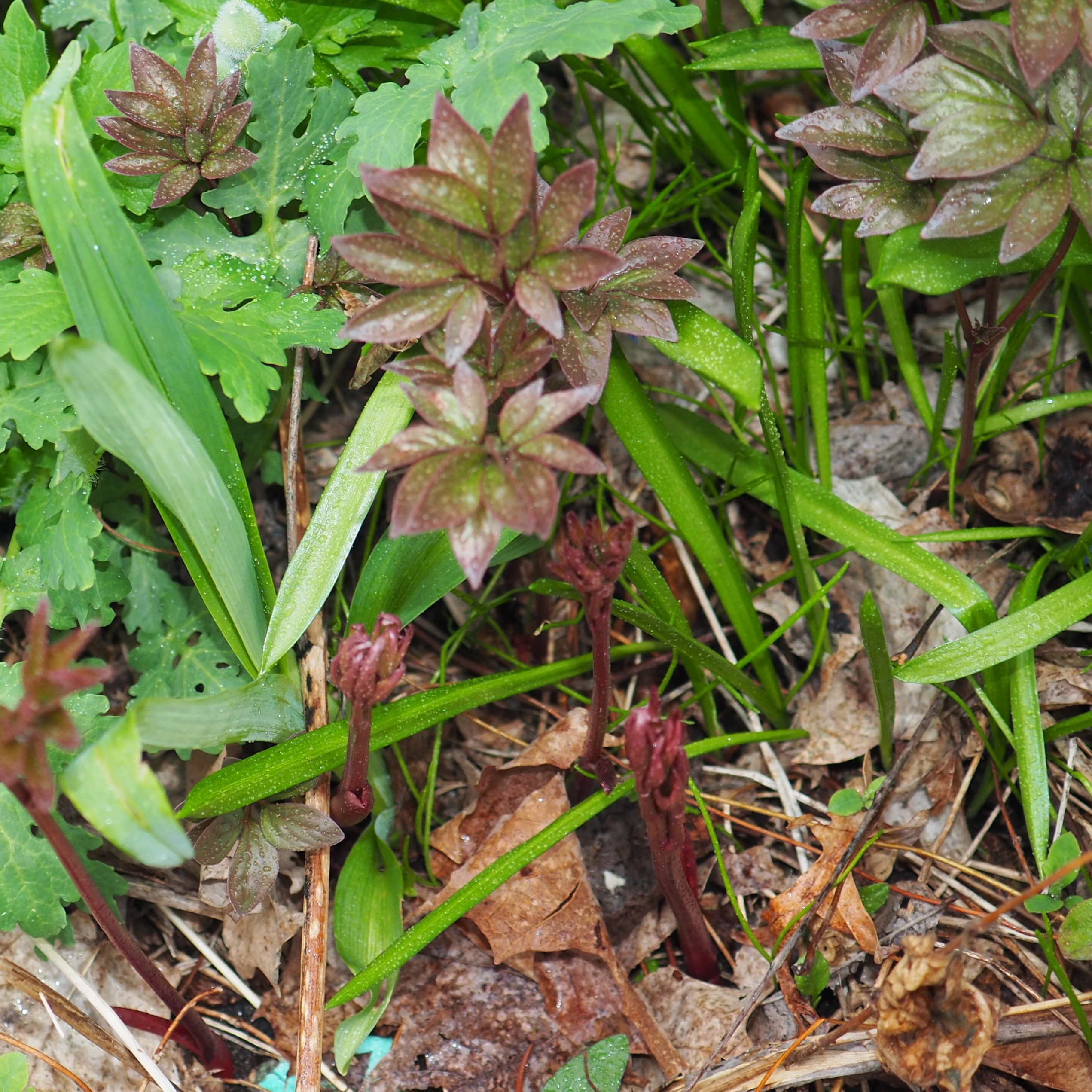
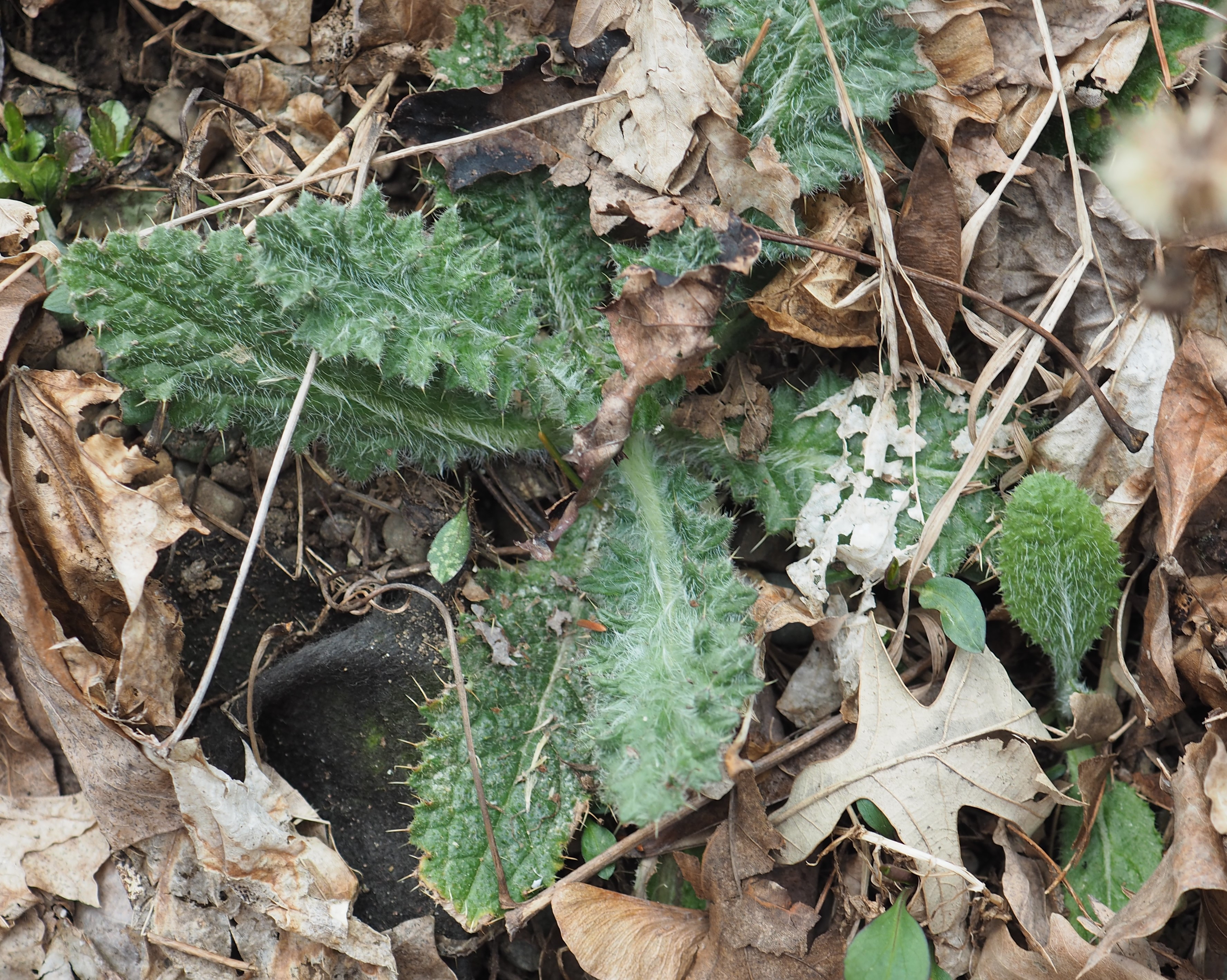
The may apples came up very suddenly. Here is a little group mixed in with some of the golden wood poppy. The tulips in the front garden are nicely budded up. And do you remember the black redbud buds? Well, now they are actually red.
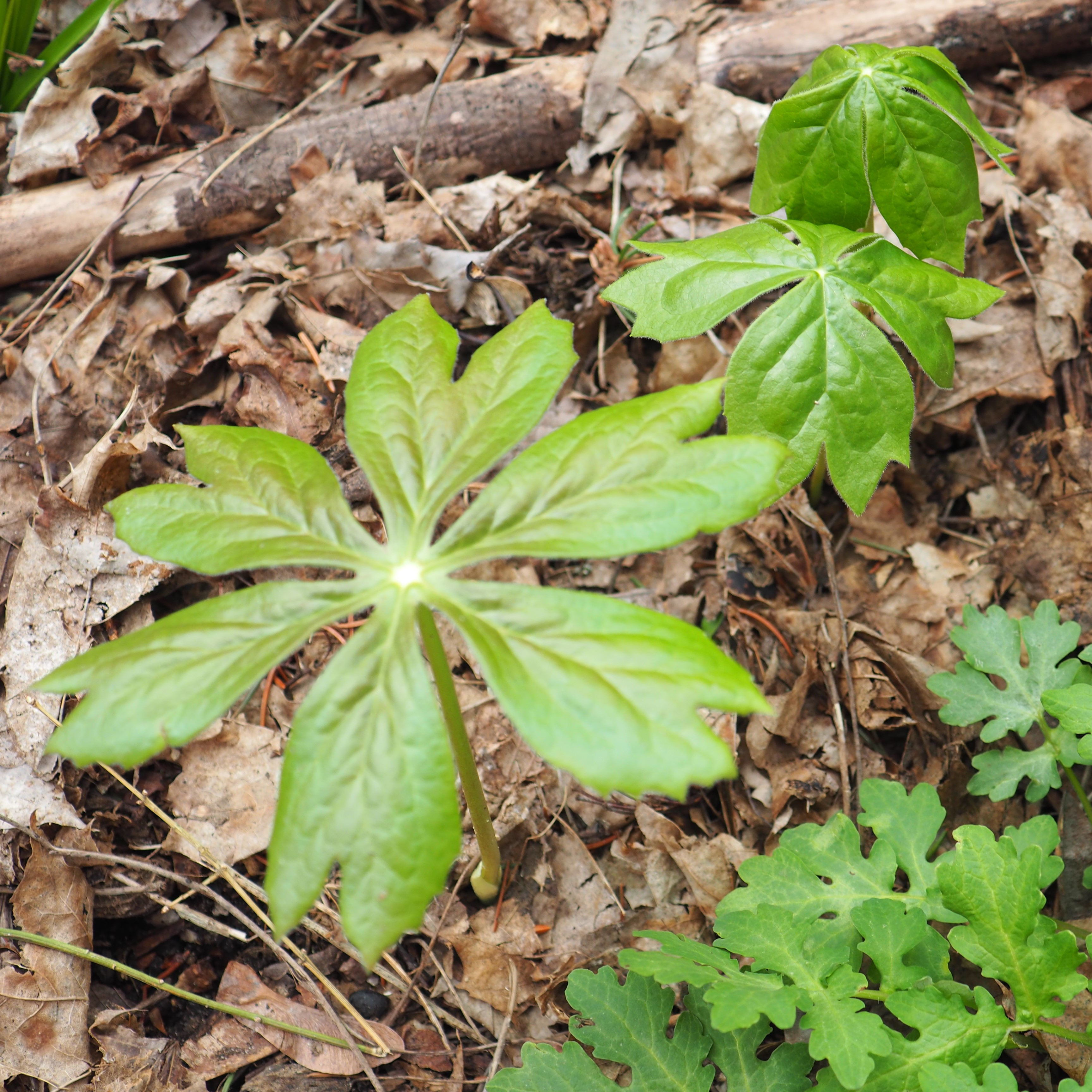
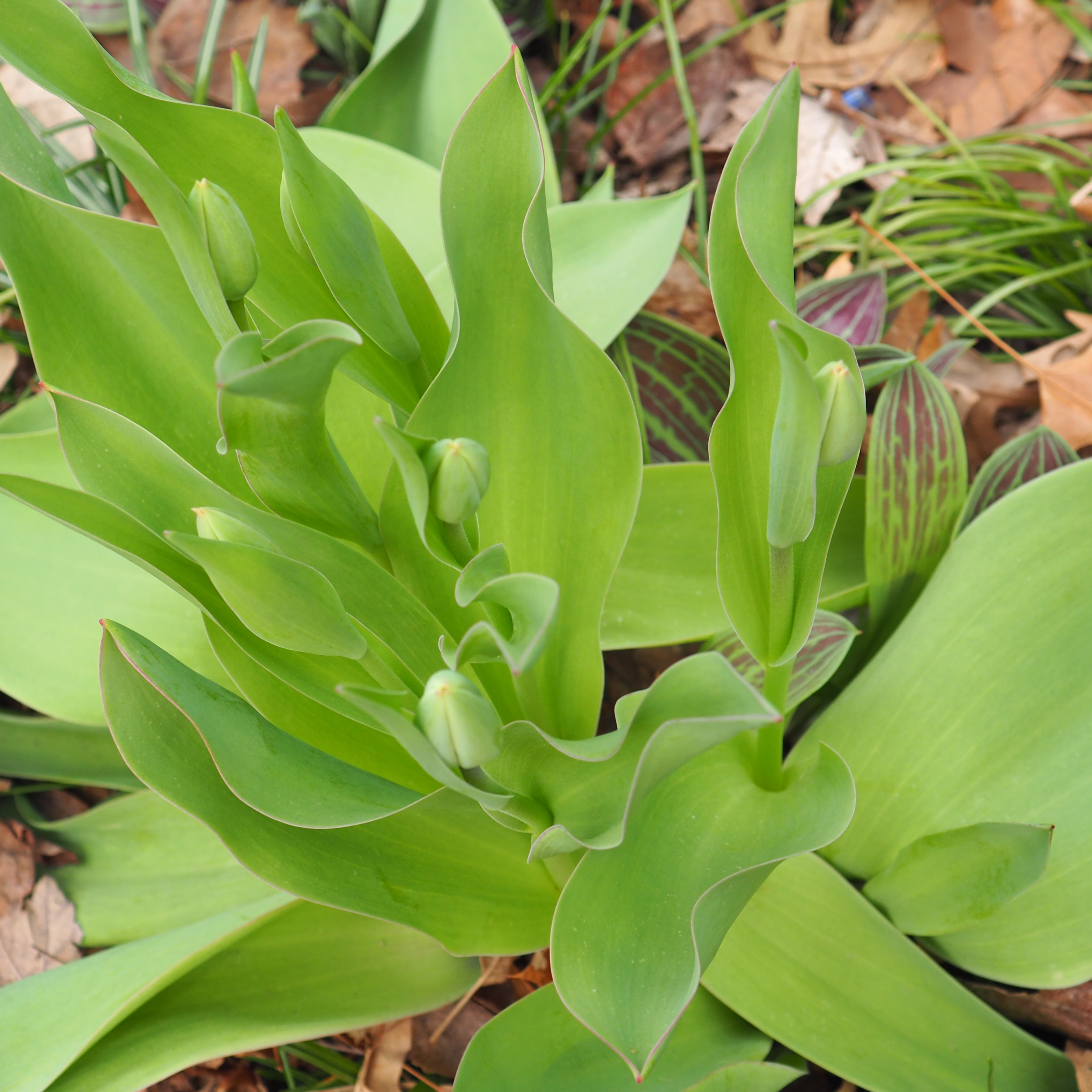
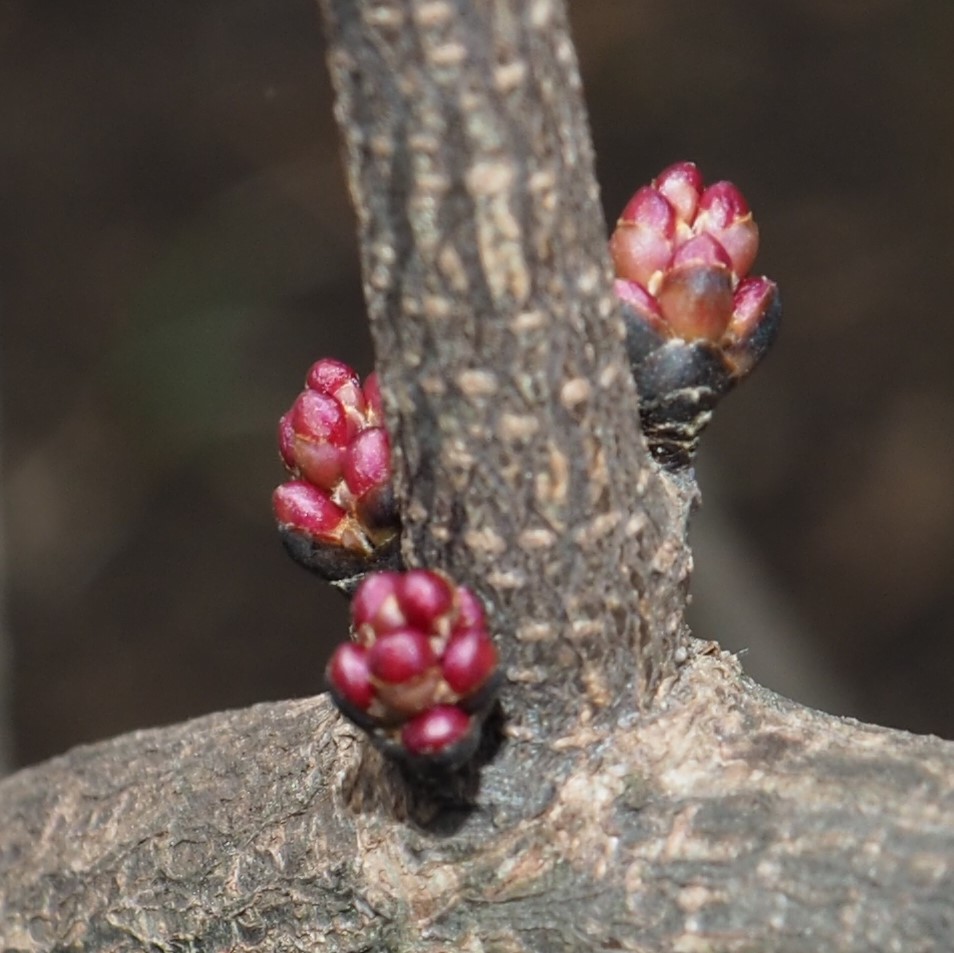
There were just a couple of other not-totally-identified insects. This first one is probably related to the sawfly from last week (picture 2). And one of our famous pillbugs, out to enjoy the wet weather.
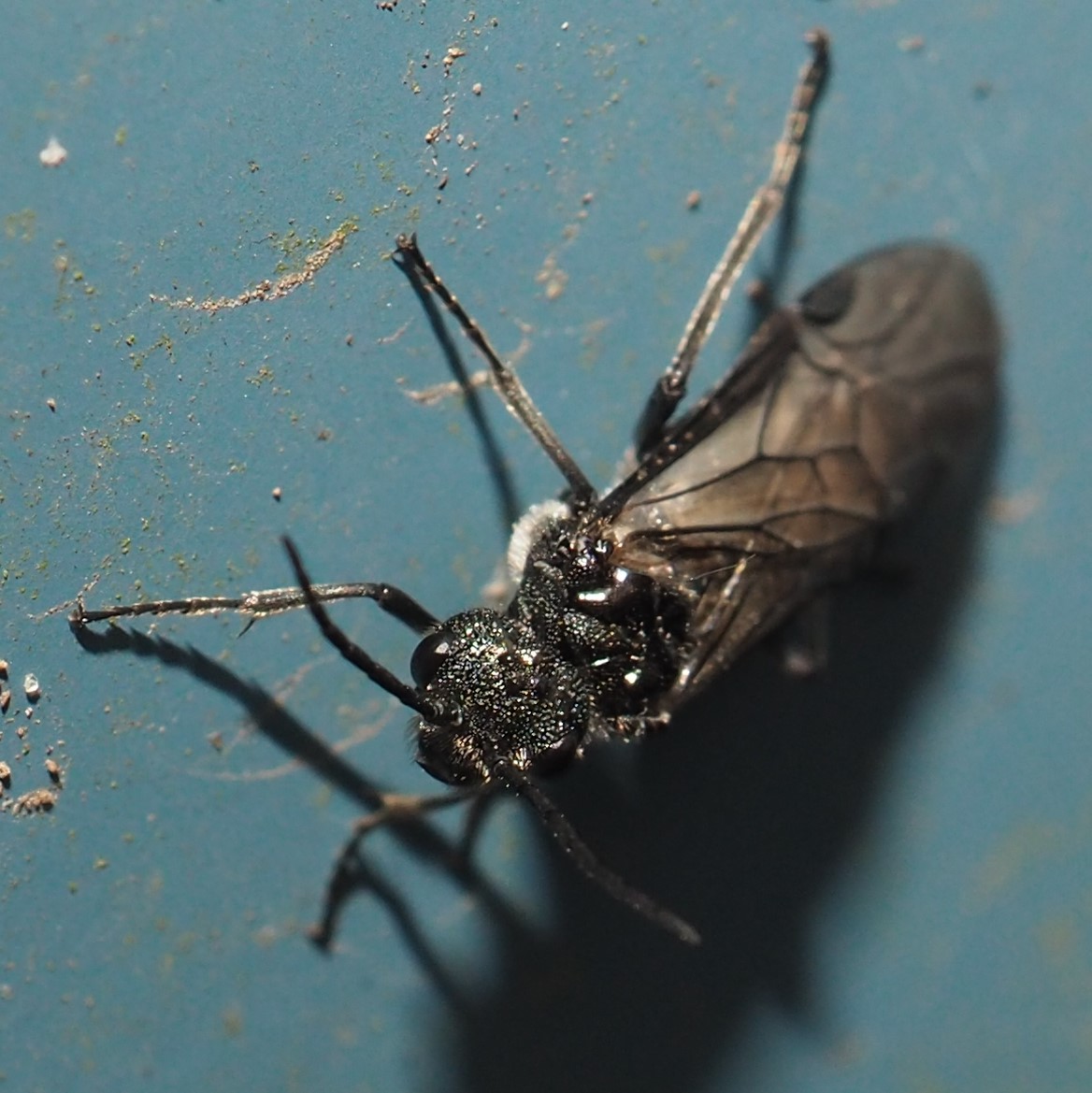
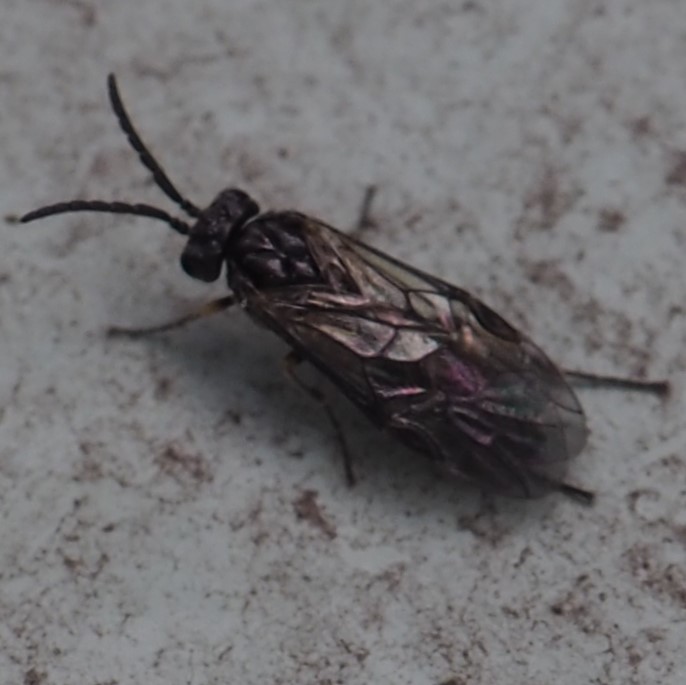
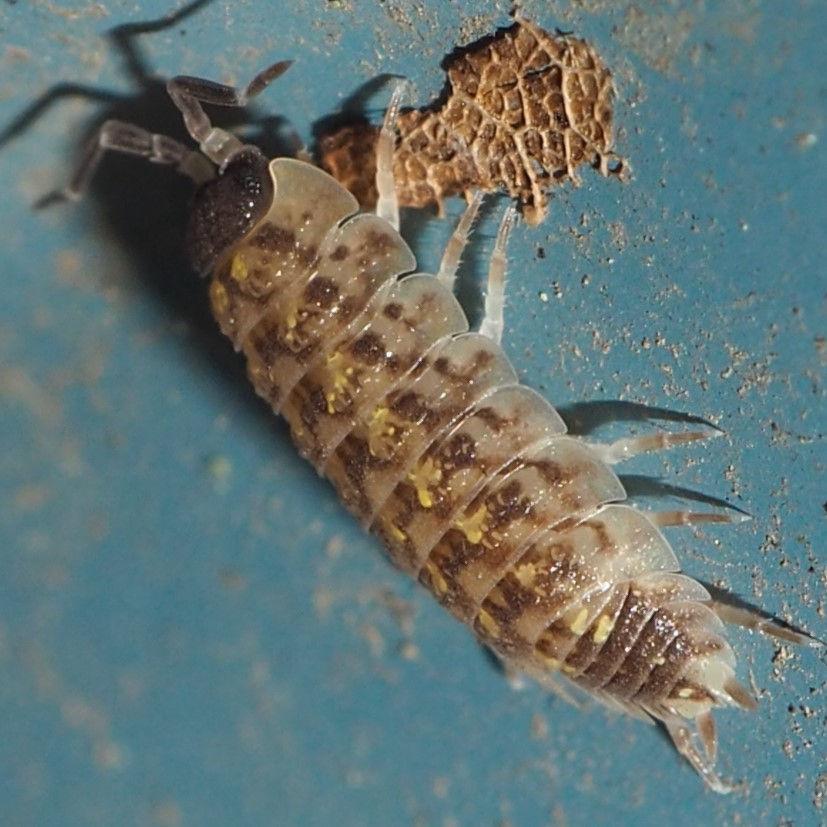
Froggy is doing his Hide-and-Seek routine again. I haven't seen him for a week again. But wait! Guess who is back after her disastrous brooding season last year. She has been on her nest for 5 or 6 days now. Actually she has moved her nesting site from directly across the porch from the front door to right beside the door. I hope this has any discouraging effect at all on whatever (I suspect another bird, and a few people suggested a blue jay) robbed her nest three times last year. To segue into the spiders, let's start with what I THINK is a very baby-ish harvestman, this tiny orange creature. It doesn't seem to be a spider at close glance, since it seems to have only one large round body section. It is likely to be Leiobunum flavum. Now to see if it changes any as it grows bigger (it was about 1-2 mm when I saw it). I know we have some orange harvestmen but they have always had a black design on their backs.
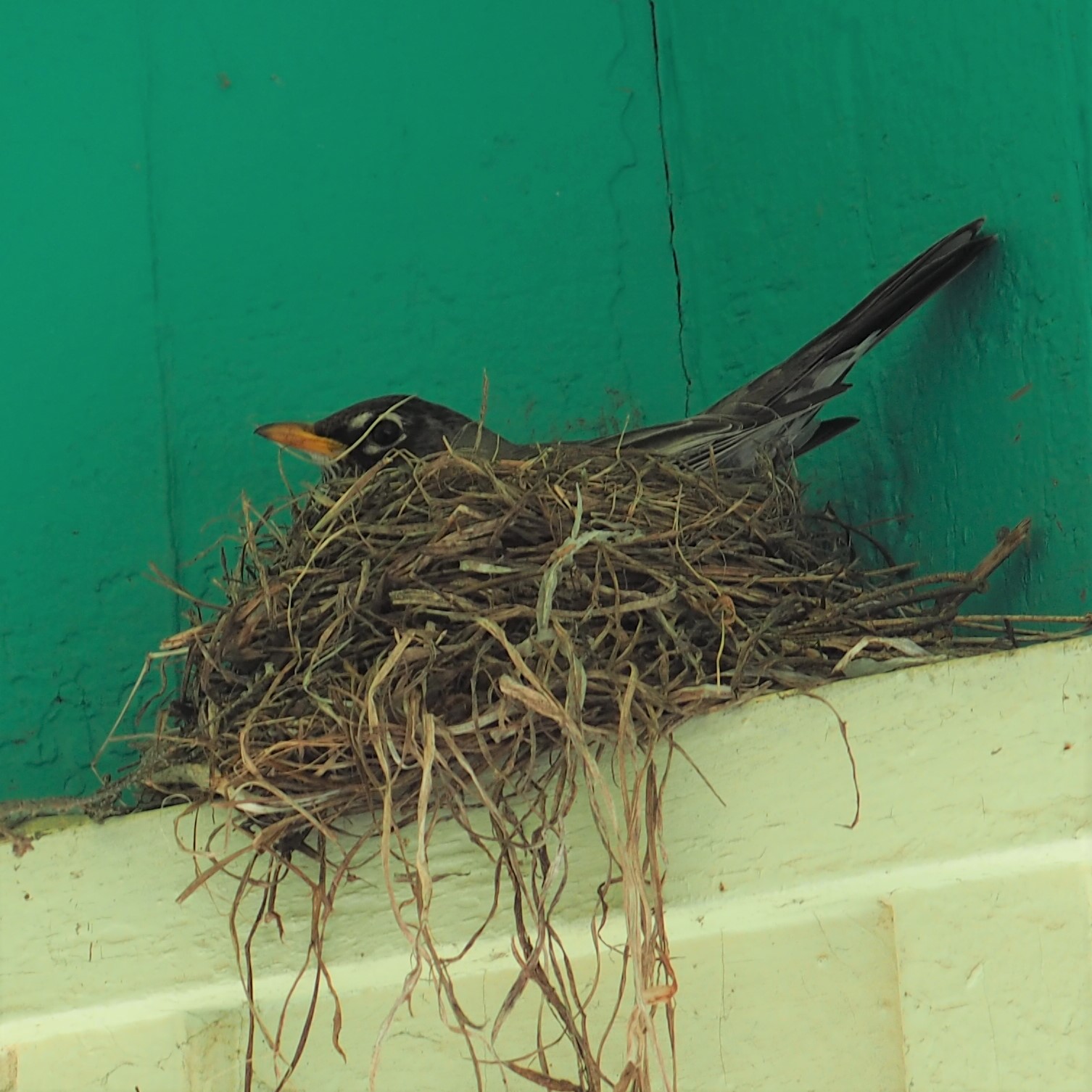
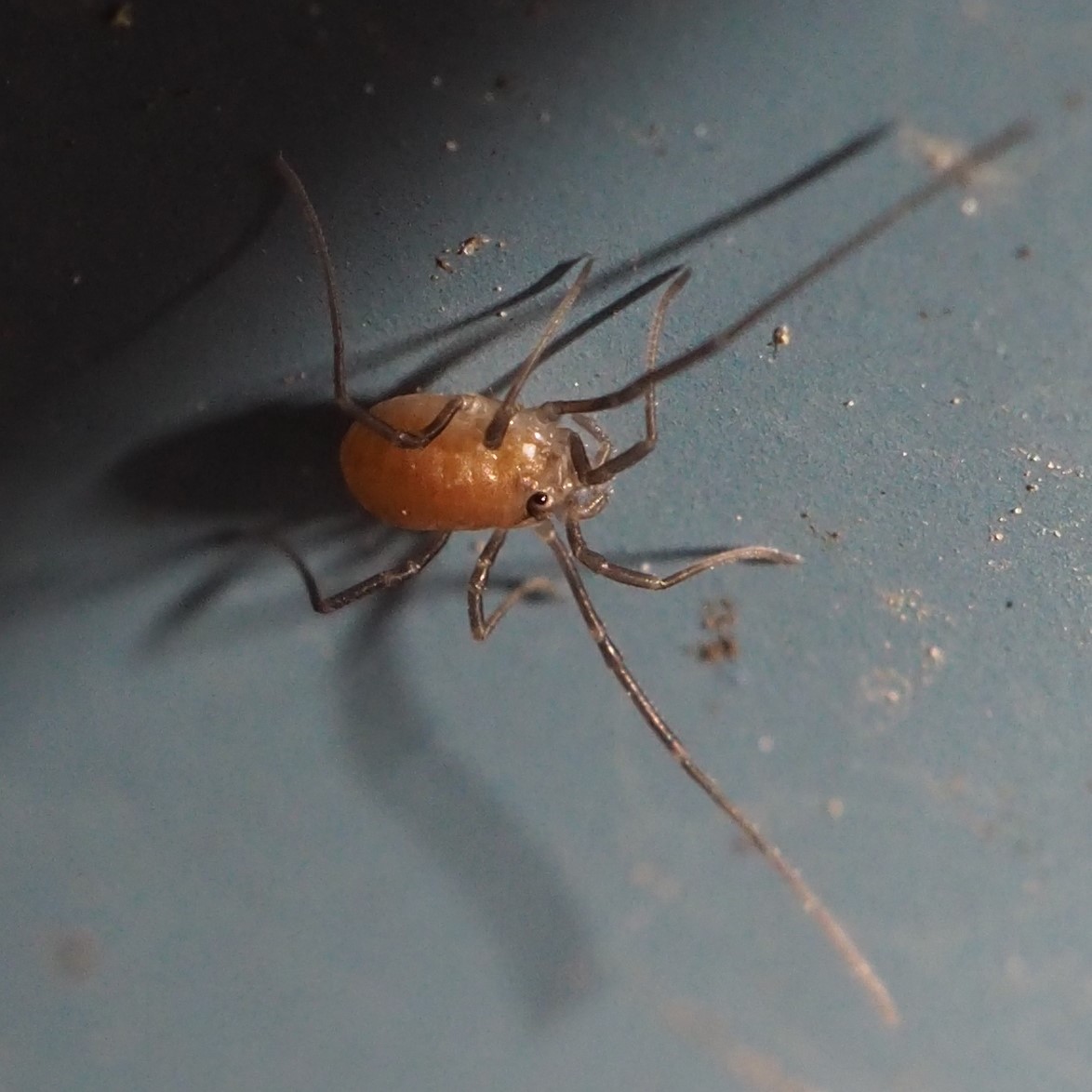
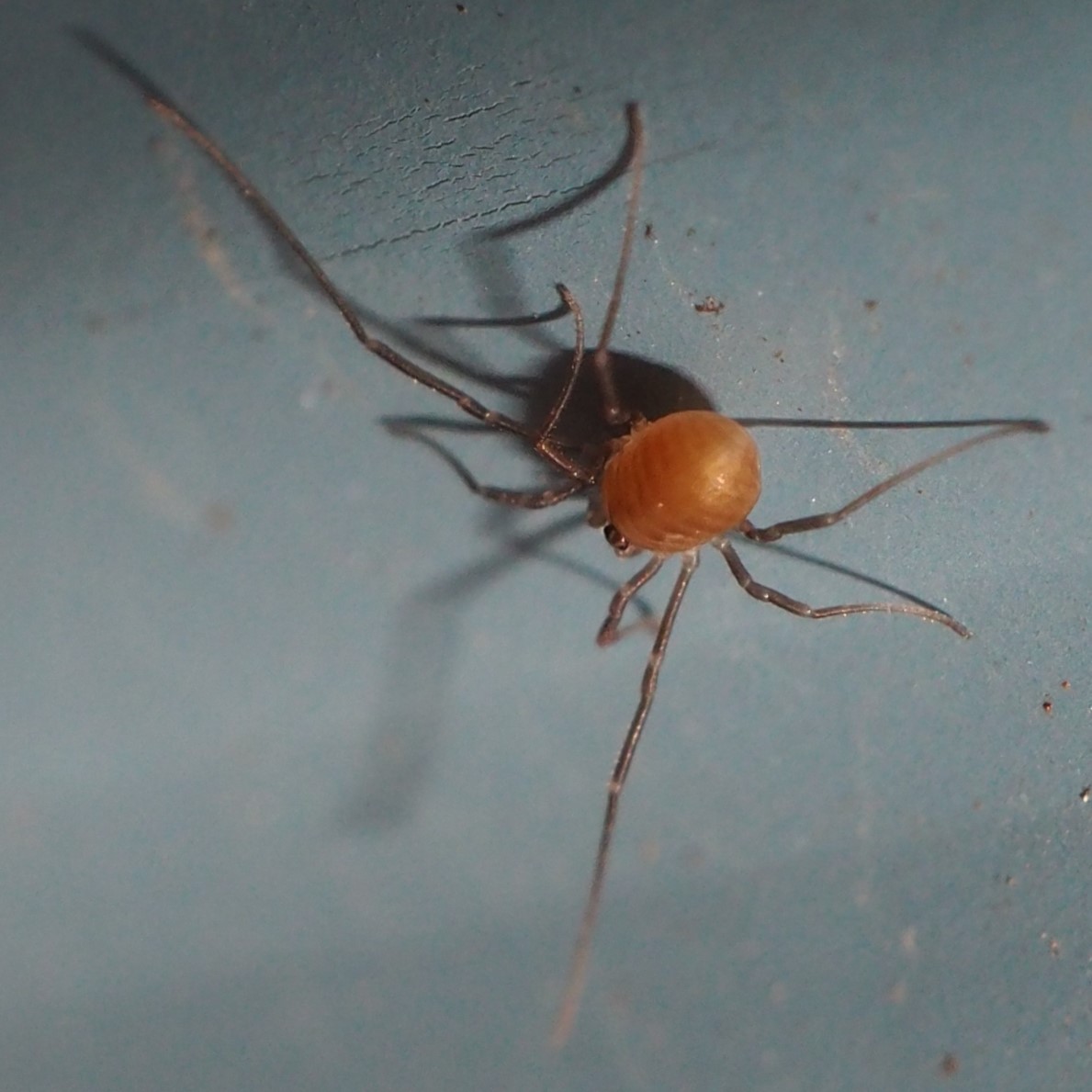
The spiders were not very evident this past week, and they were mostly very tiny, meaning they were mostly juveniles. This round one seems like some kind of cobweb spider, maybe even a junior Common House Spider.
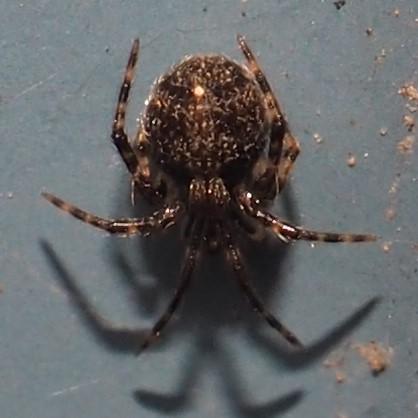
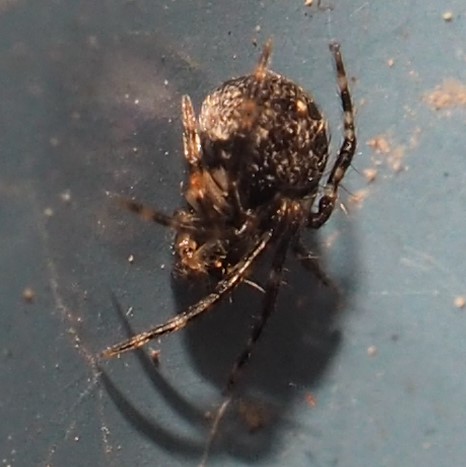
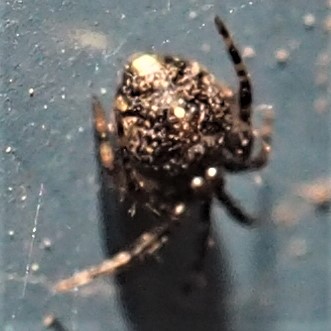
This one made it easy to spot and ID. It's a baby Orchard Orbweaver, Leucauge venusta, and you probably now recognize a couple of giveaways for ID'ing it. One is the ladder design and the other the bright pink "smile". It has been sitting or running about in the same location on the east wall of the shop for a couple of weeks. When I started taking pictures of it, it looked like a little circle with radius .5 mm, but now it is closer to 1 mm. it now has started spending more time on a mini-web, that is to say a strand of webbing. It must be eating well, and next week you'll see it with what looks like a tiny fly. I shouldn't have told you that!
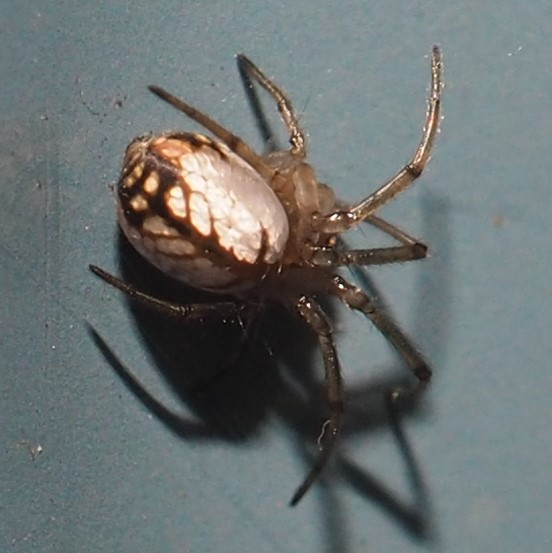
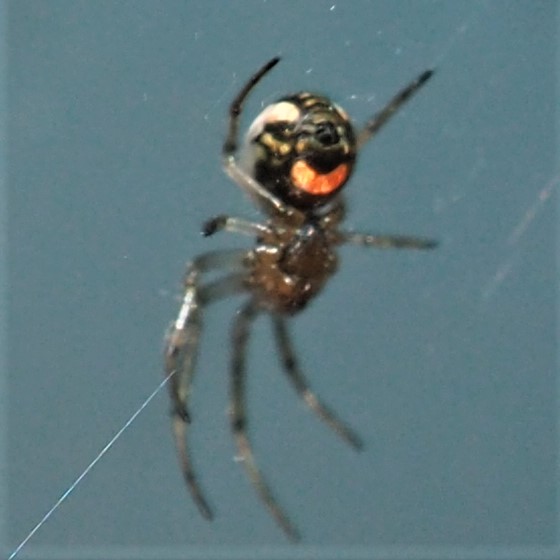
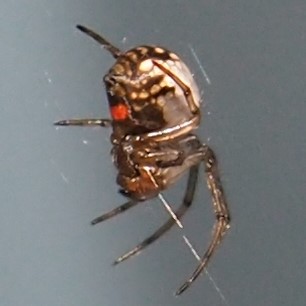
The fishes are becoming more active. The other day was warmish and I saw a little bunch of them picking at the pond floor finding bits of plant matter to satisfy their early spring appetites. Meanwhile you can see the lily leaves floating on top of the water. We've been watching them reach for the top and they are up there now! Picture 1: Pinky and Leroy, two large 5 plus year-olds and two little 2-year-olds; Picture 2: Fishes and lily pads. Oh! I just noticed something interesting in picture 2 - if you click twice to magnify the picture, and then use the horizontal and vertical sliders, you can navigate to the upper middle of the picture, and THERE is a Water Strider. They are usually very cagey about people getting close enough to take a close-up picture, but there it is! If you can't quite make out the shape of the insect, you might notice the circles formed by surfce tension where their feet touch the water surface.
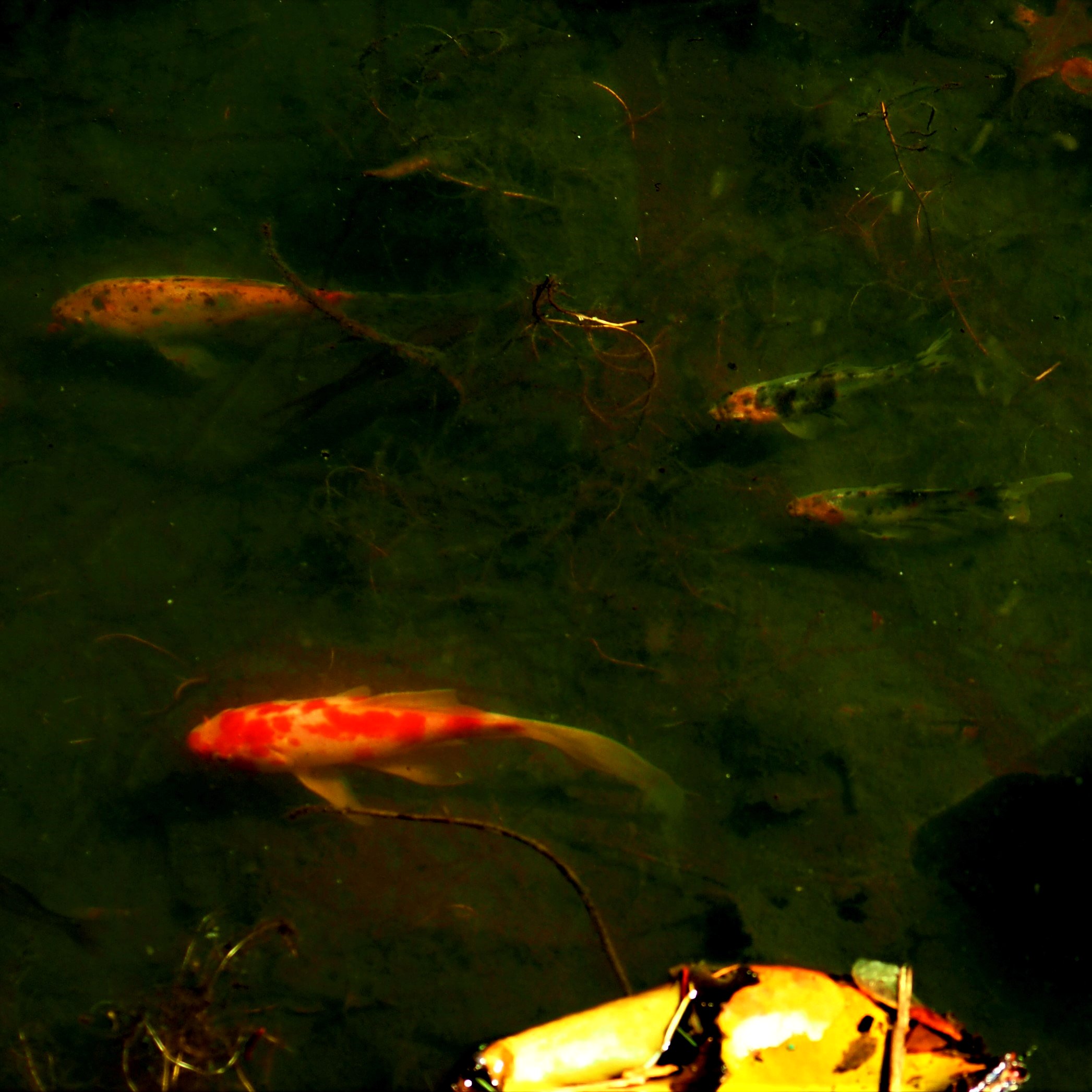
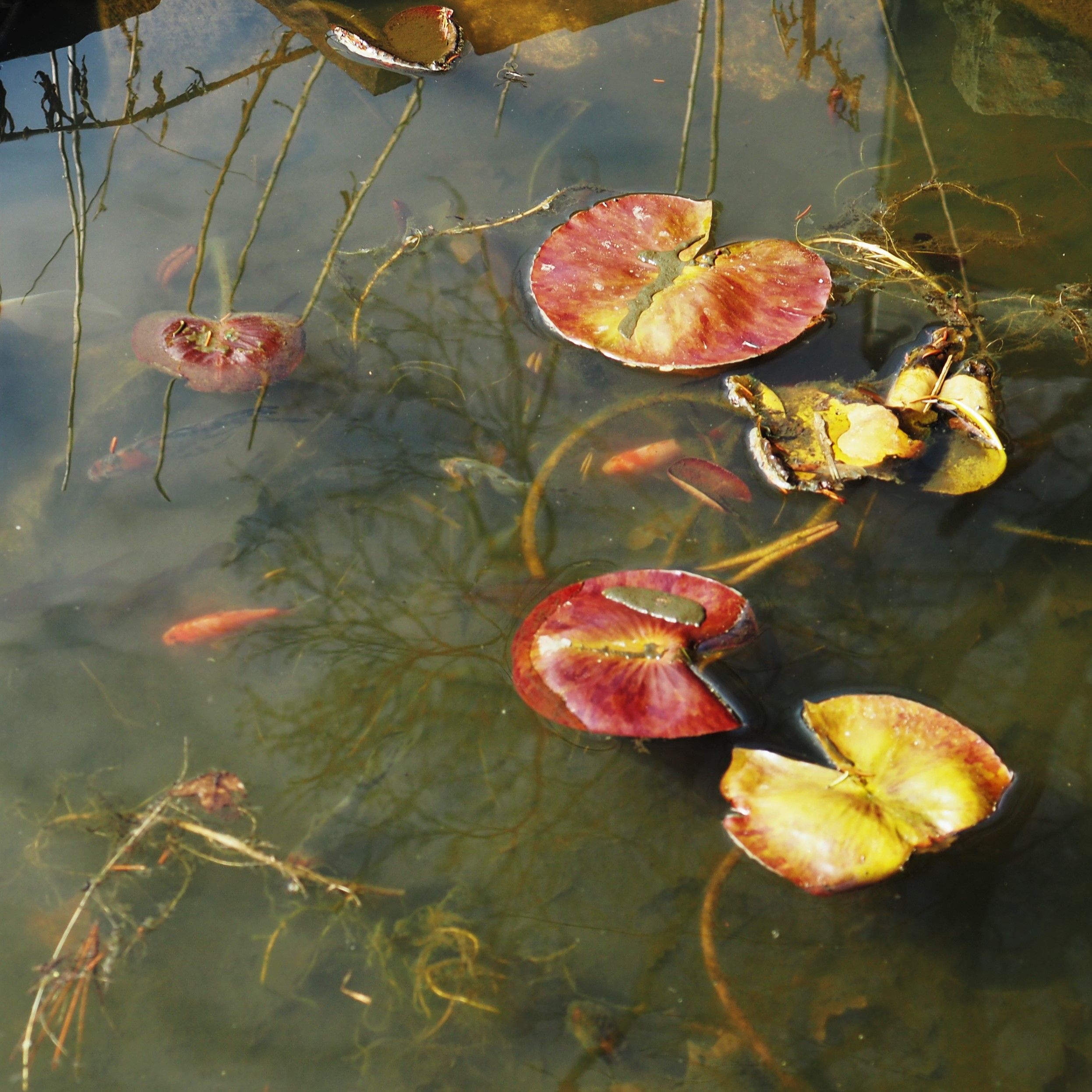
After that winter, it is so good to be able to go out maybe 5 or 6 out of 7 days to look for new creatures. As usual, there are always some that I've never seen or noticed before, but it's also great to see old friends, critters and plants!
So to everyone, Happy International Mother Earth Day! And every other day too!
Love, Martha
Back to April 14, 2019
Forward to April 28, 2019
Back to main menu
copyright Martha O'Kennon 2019














.gif)








































